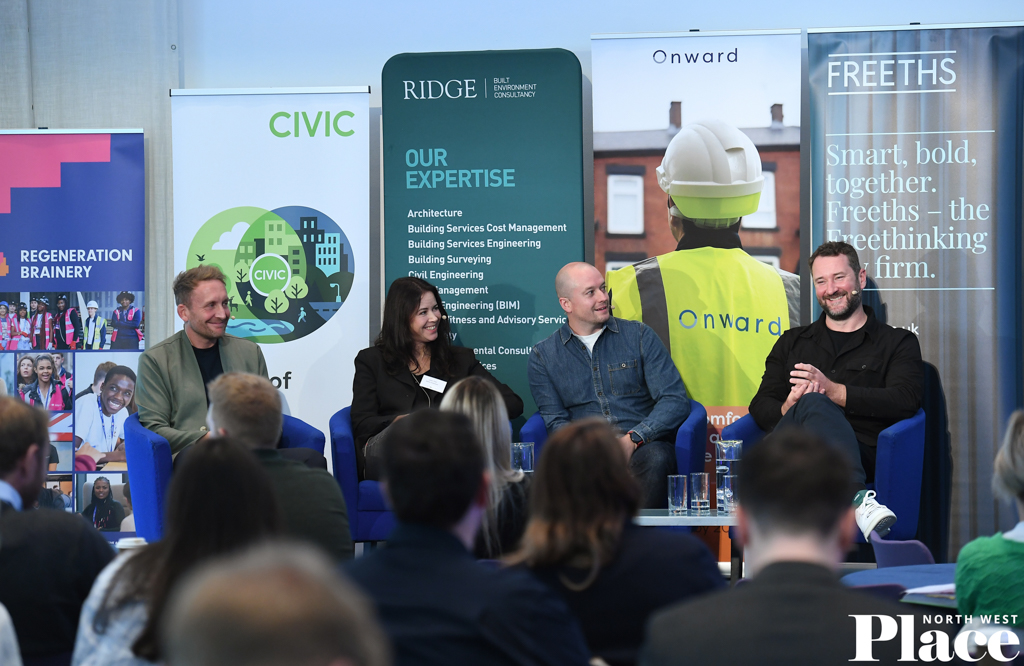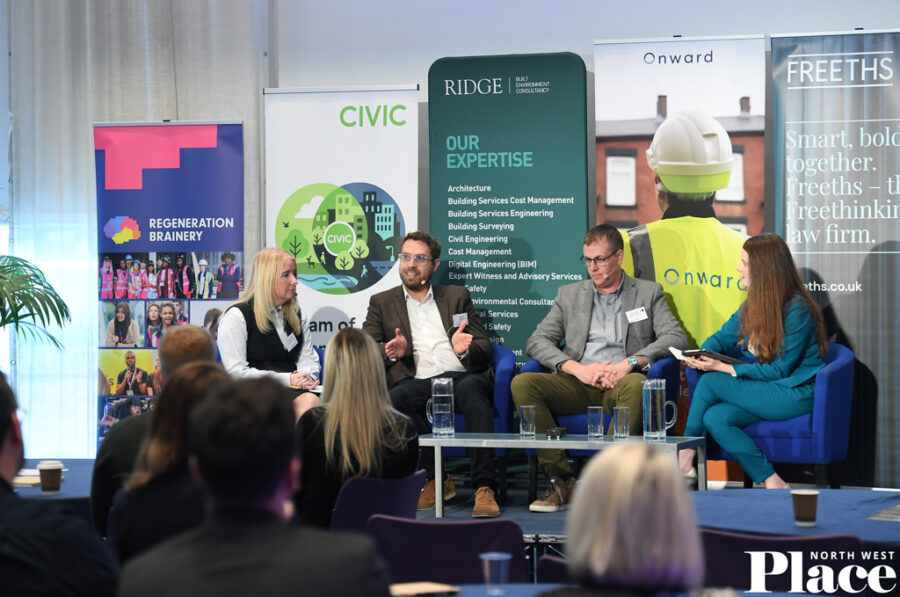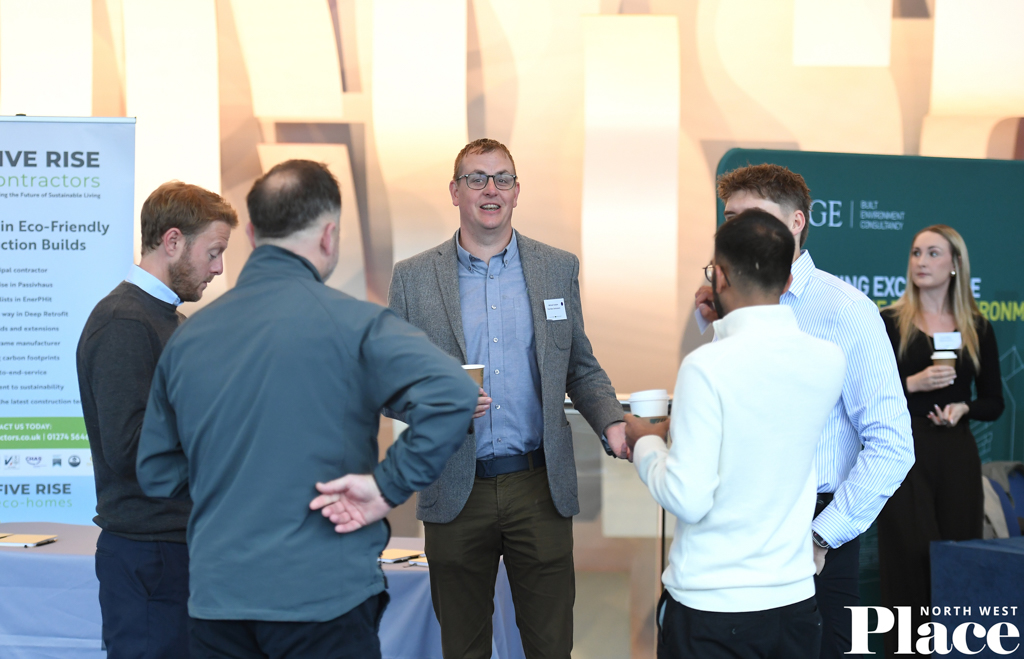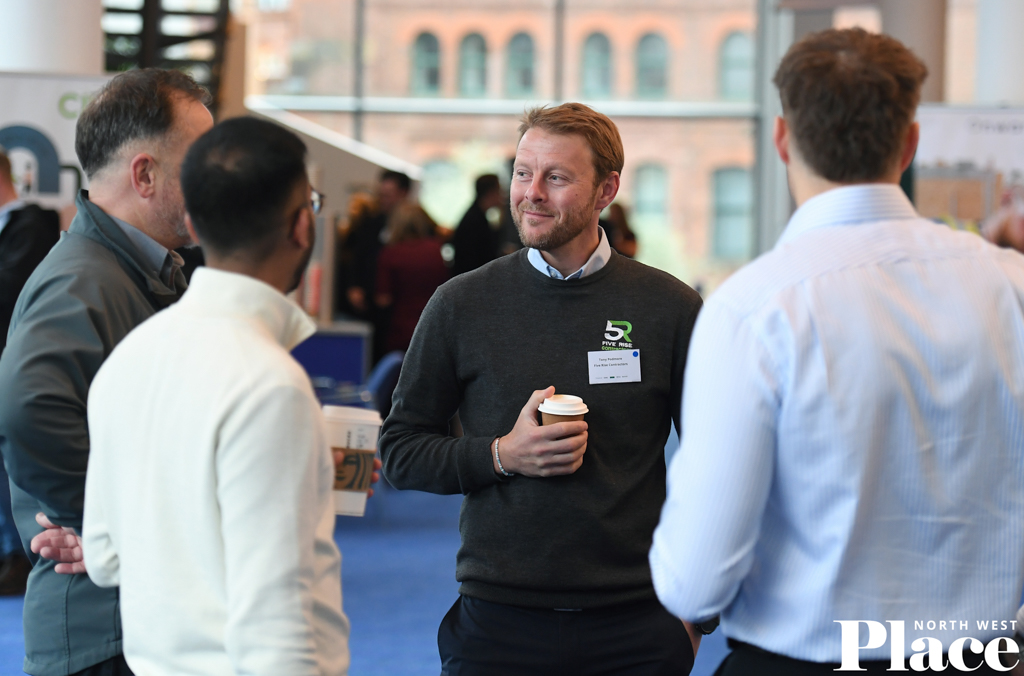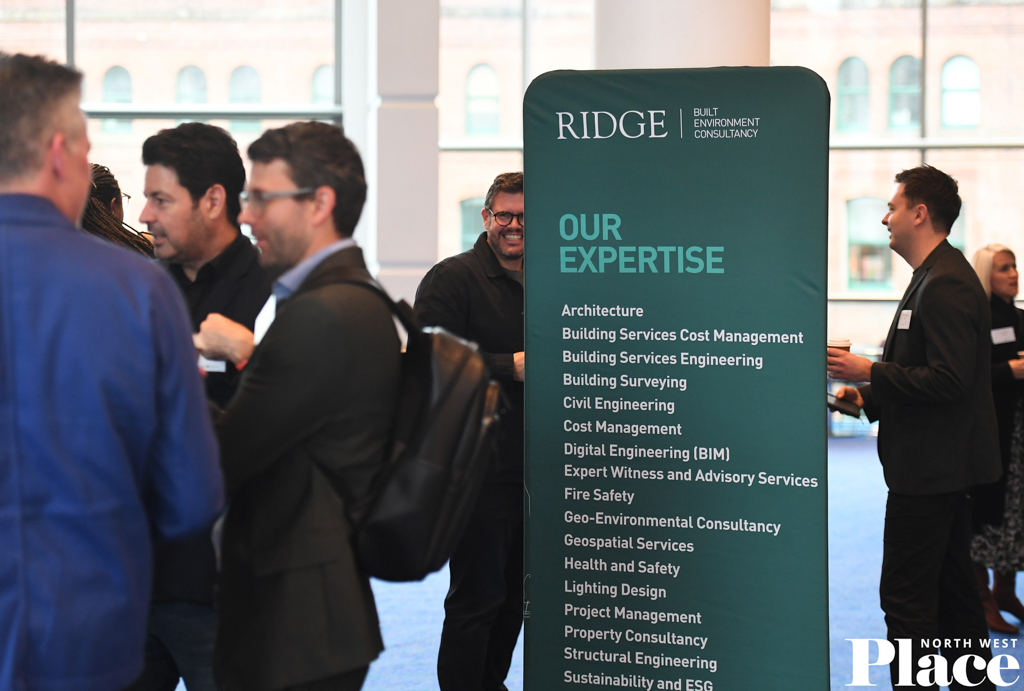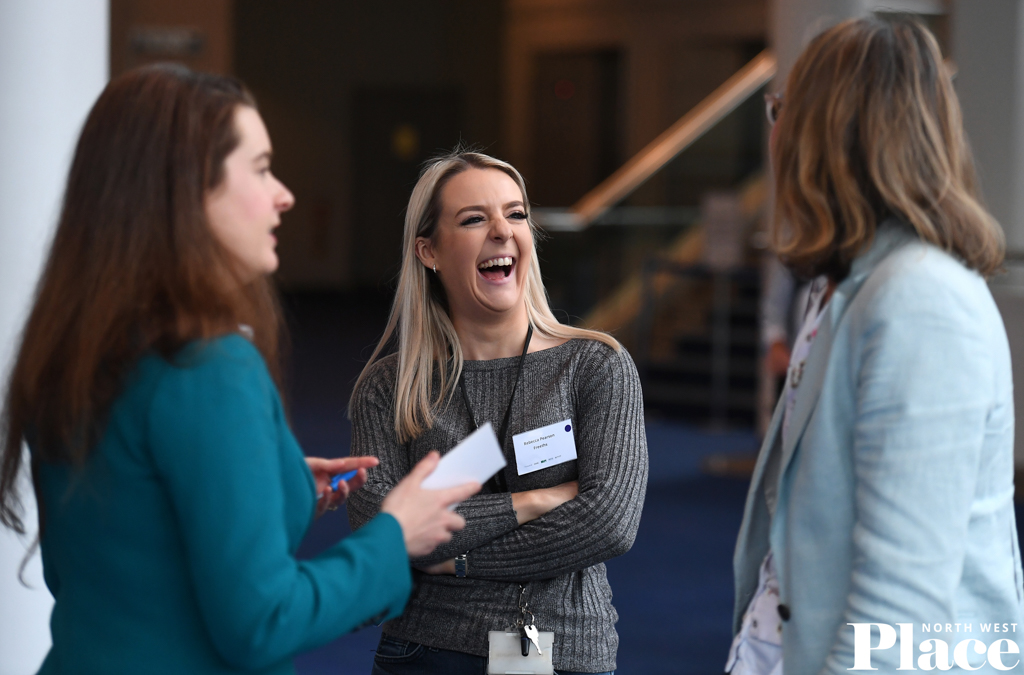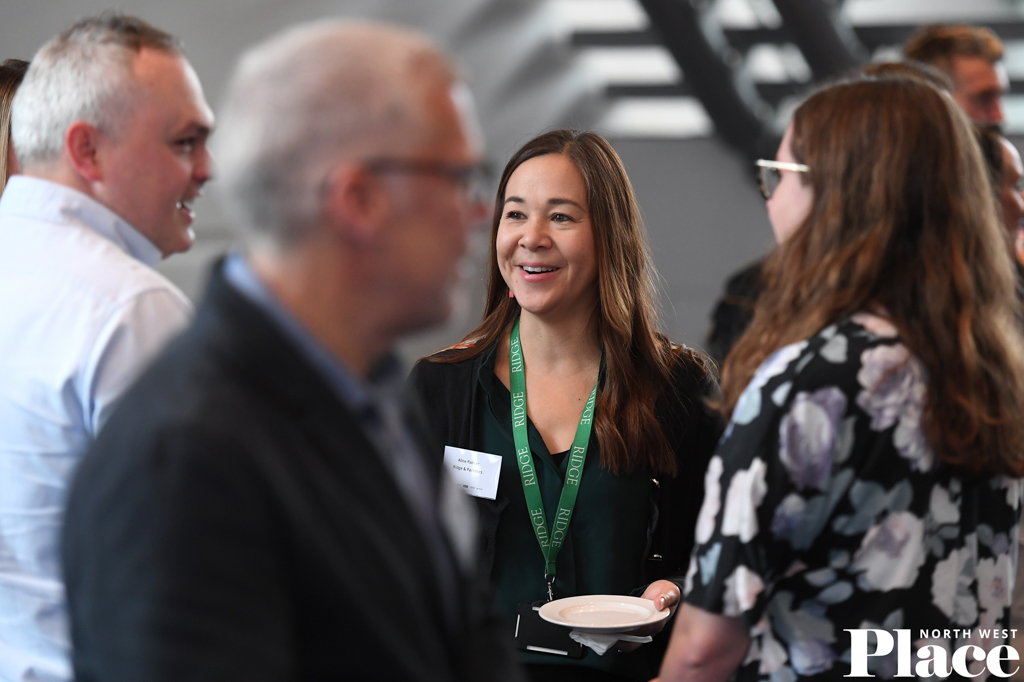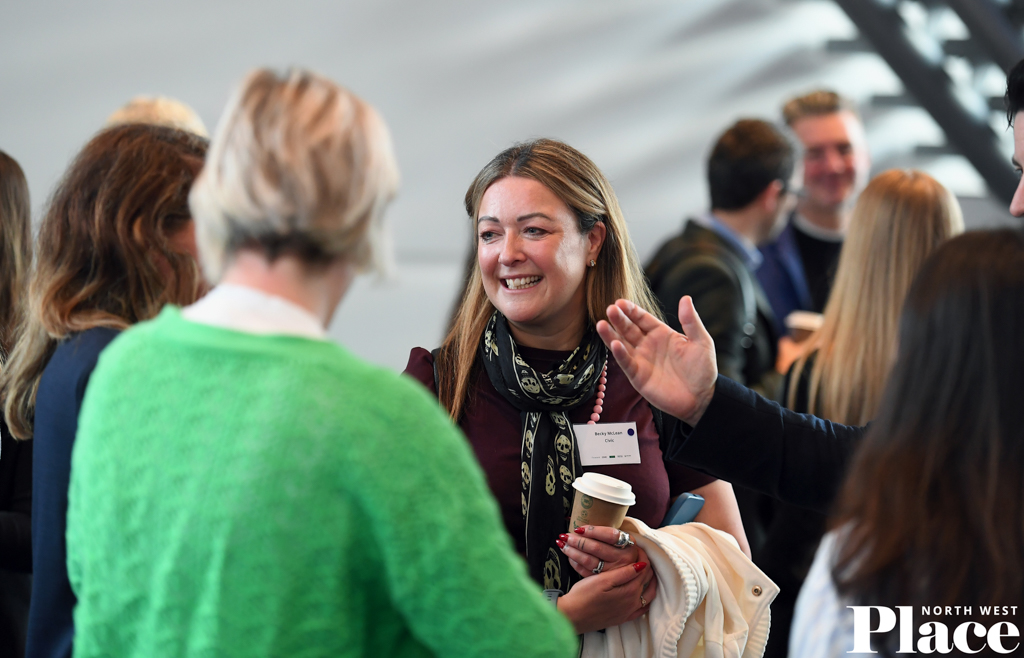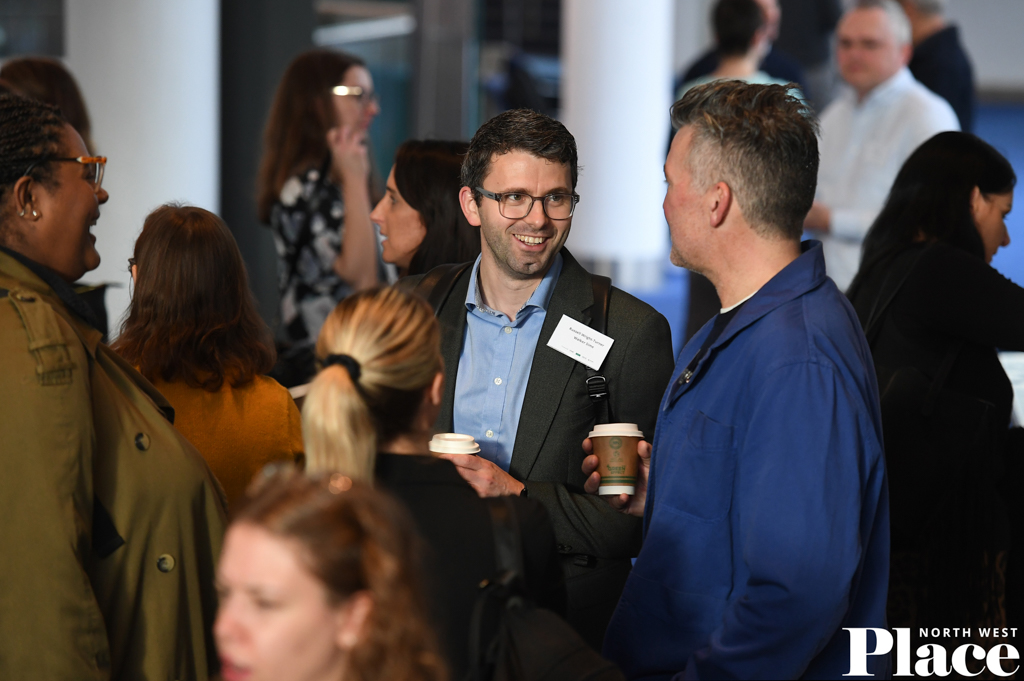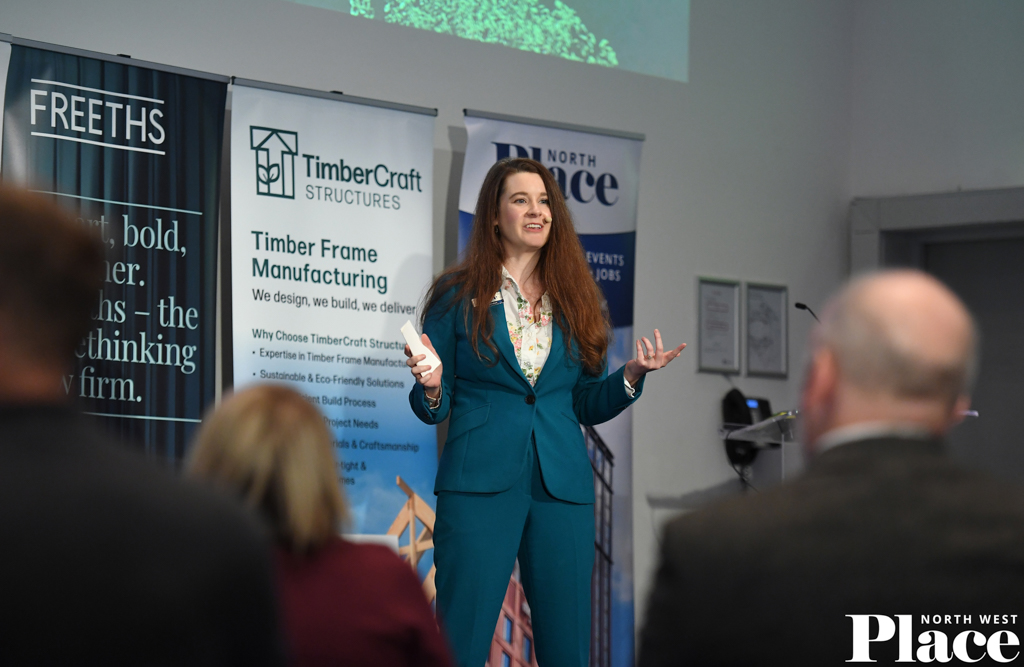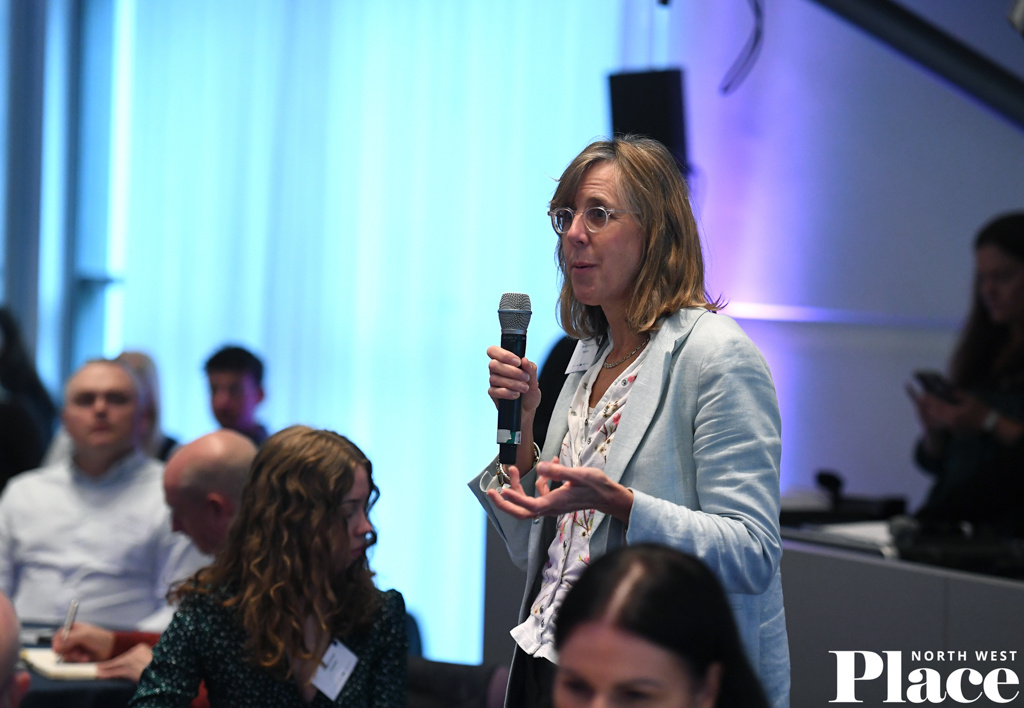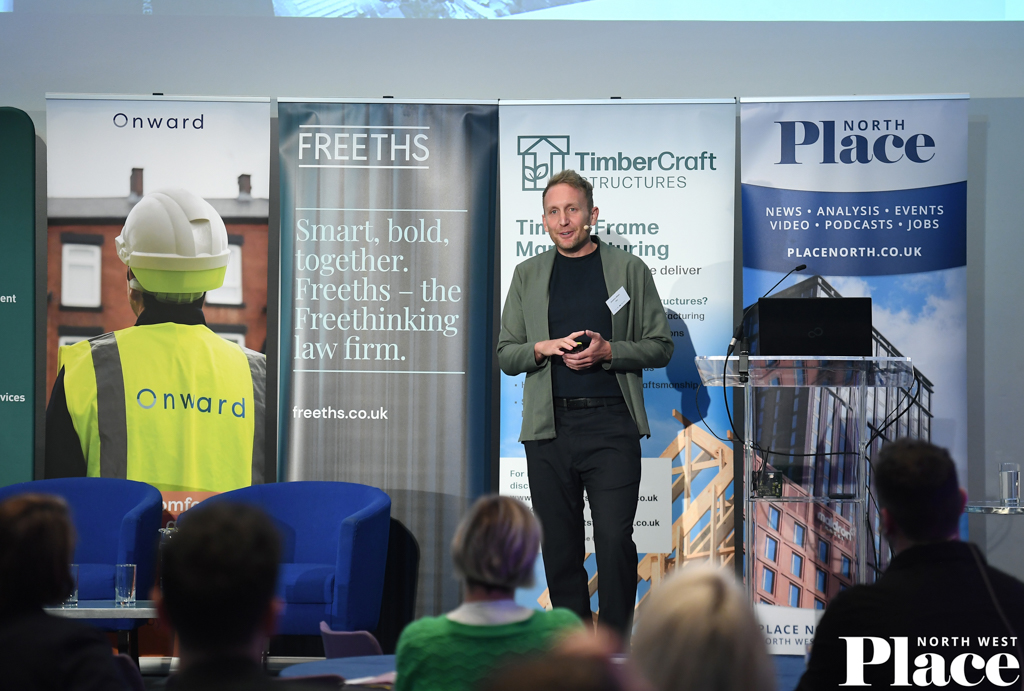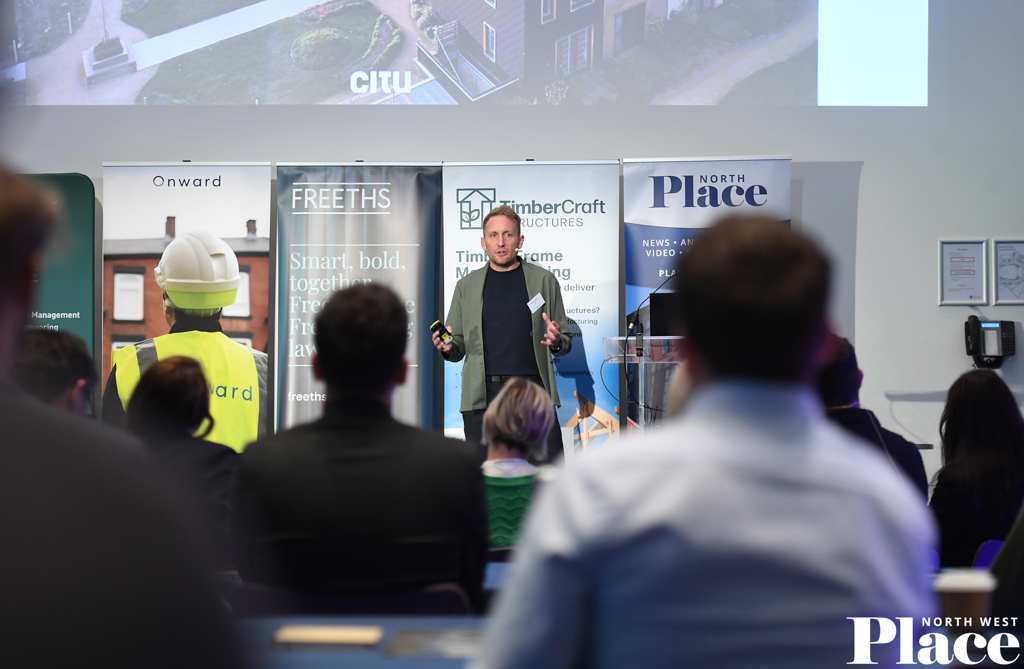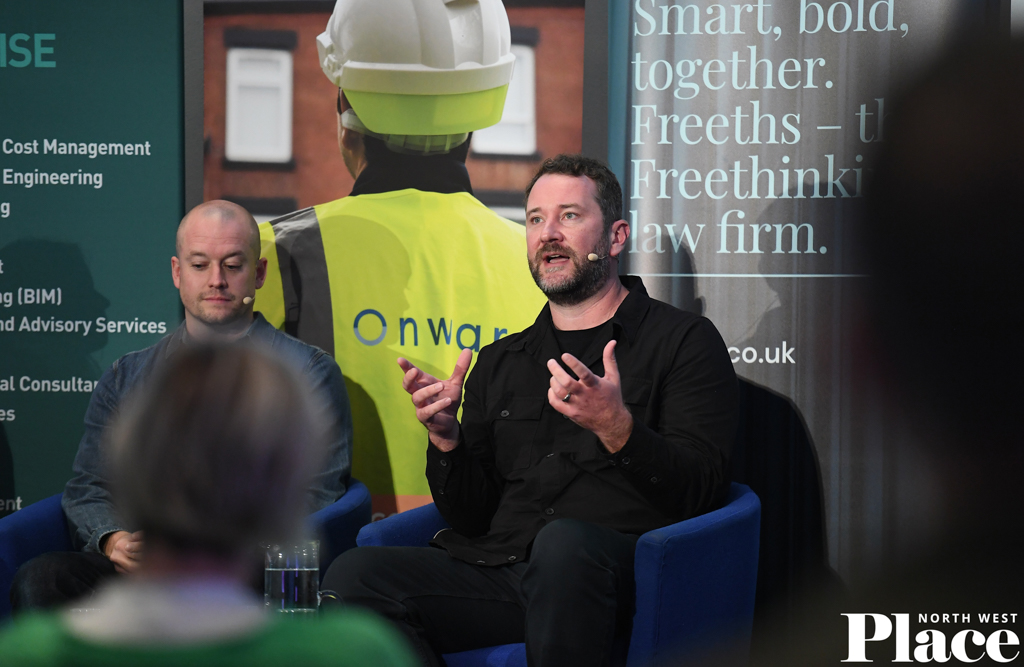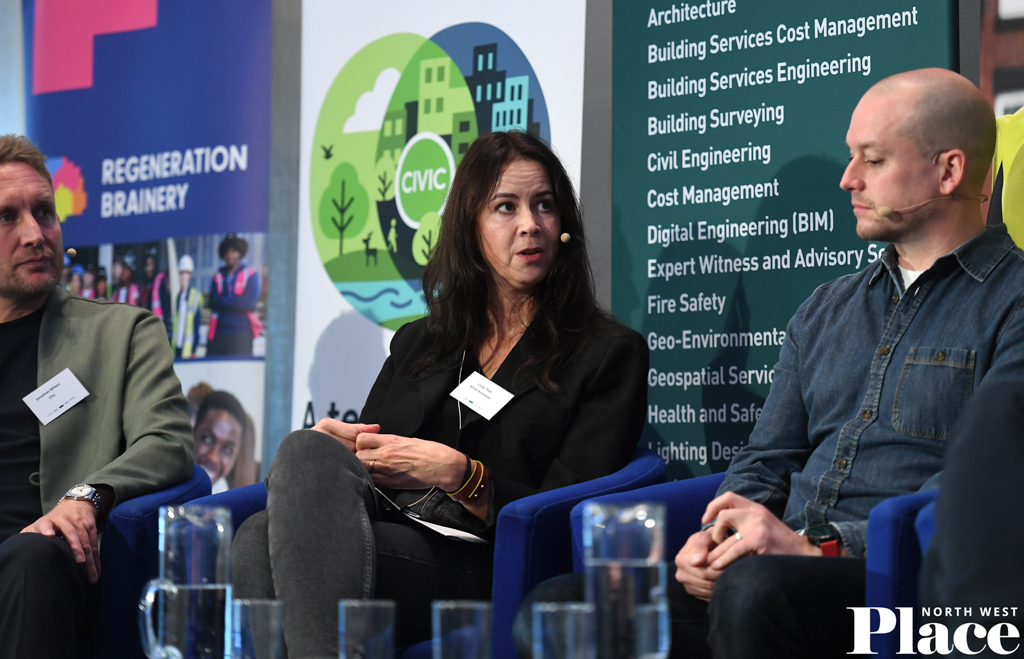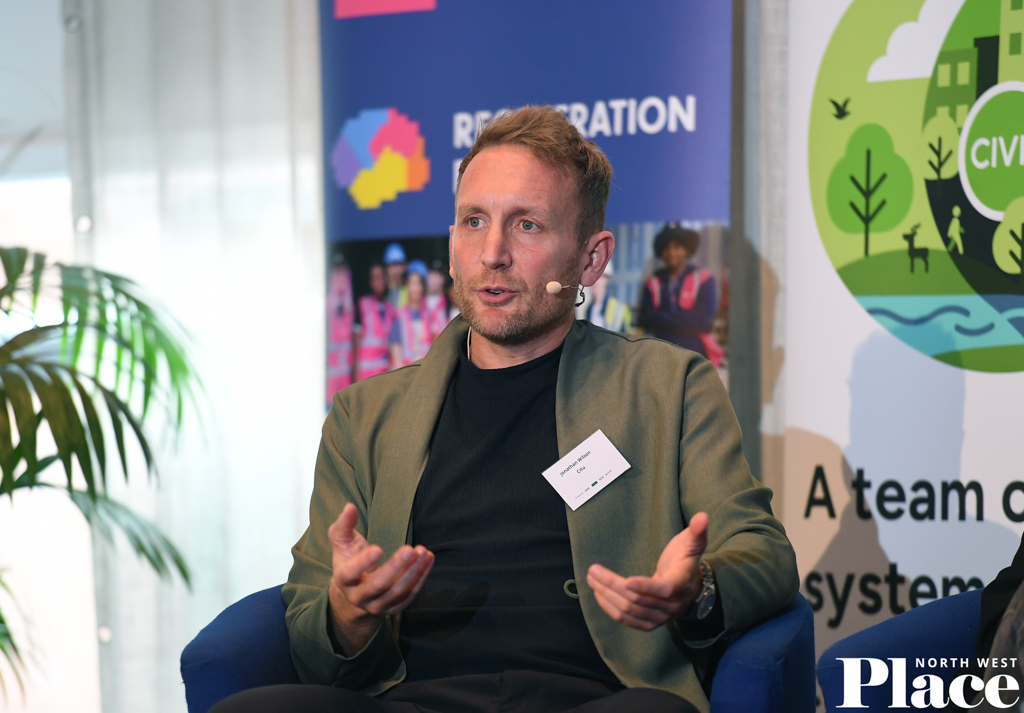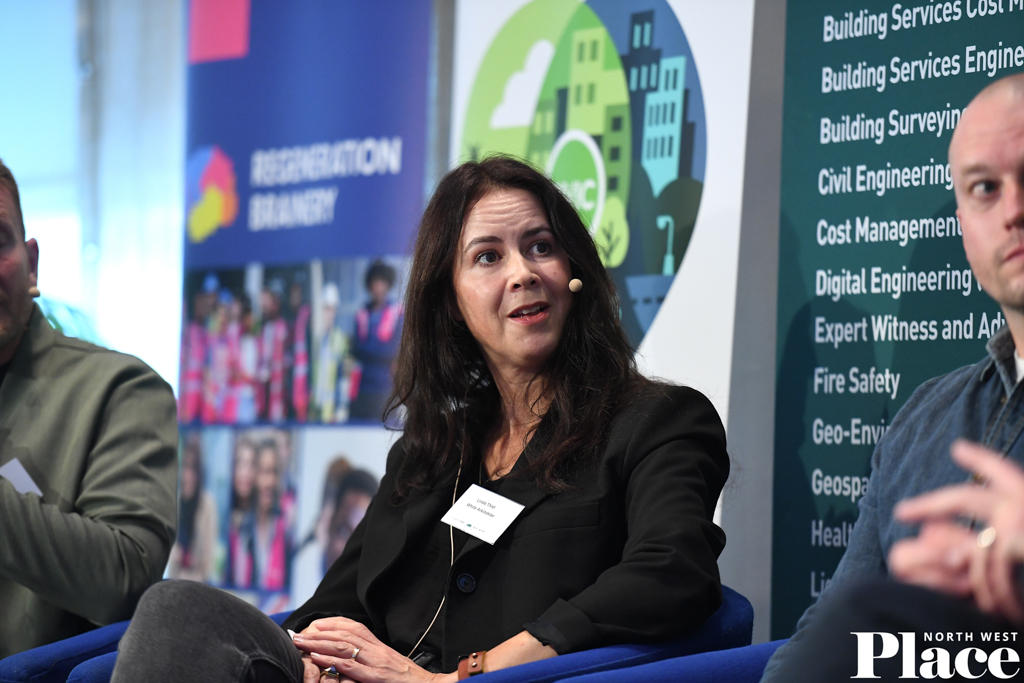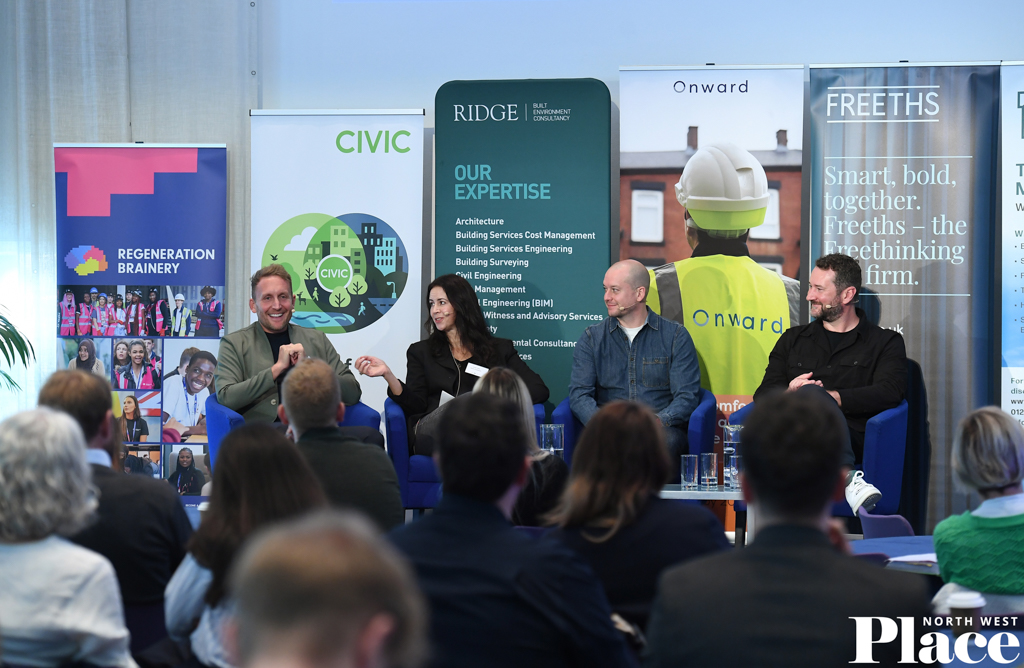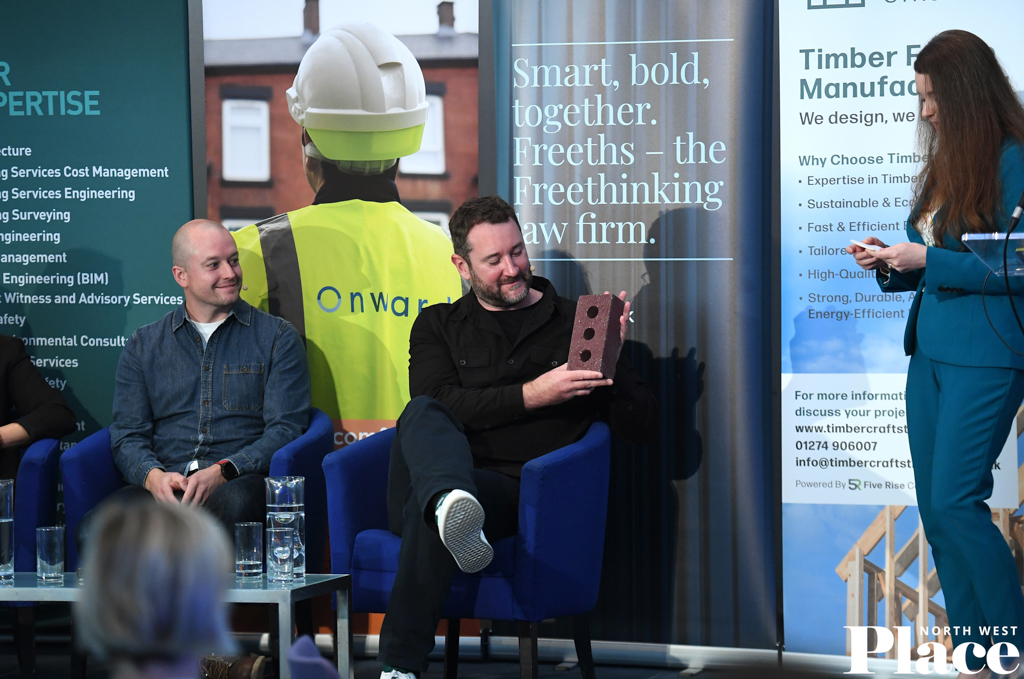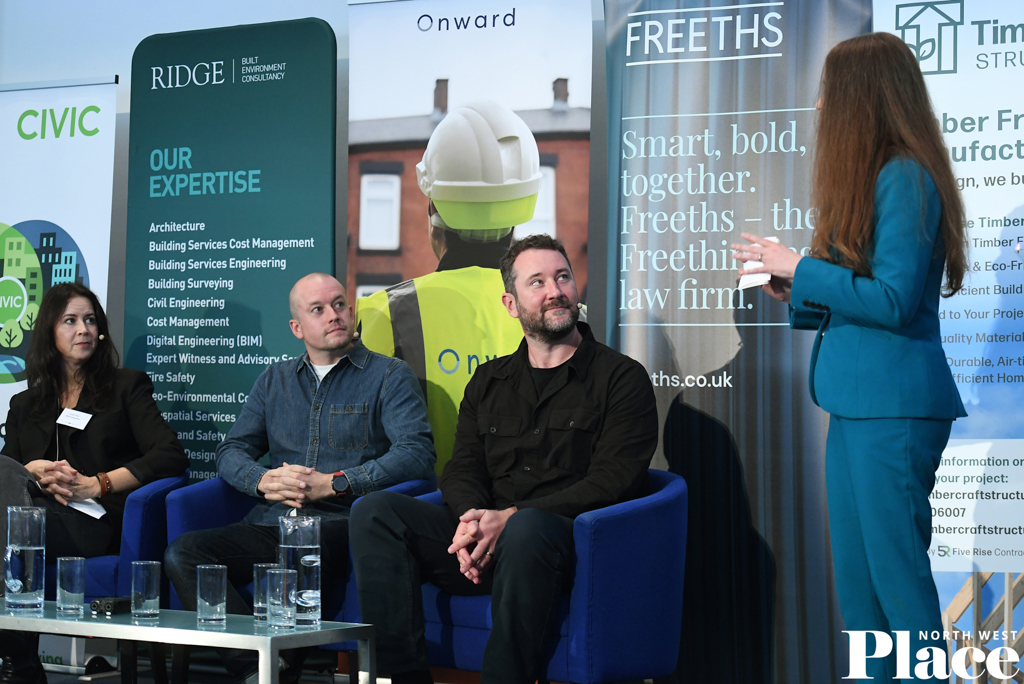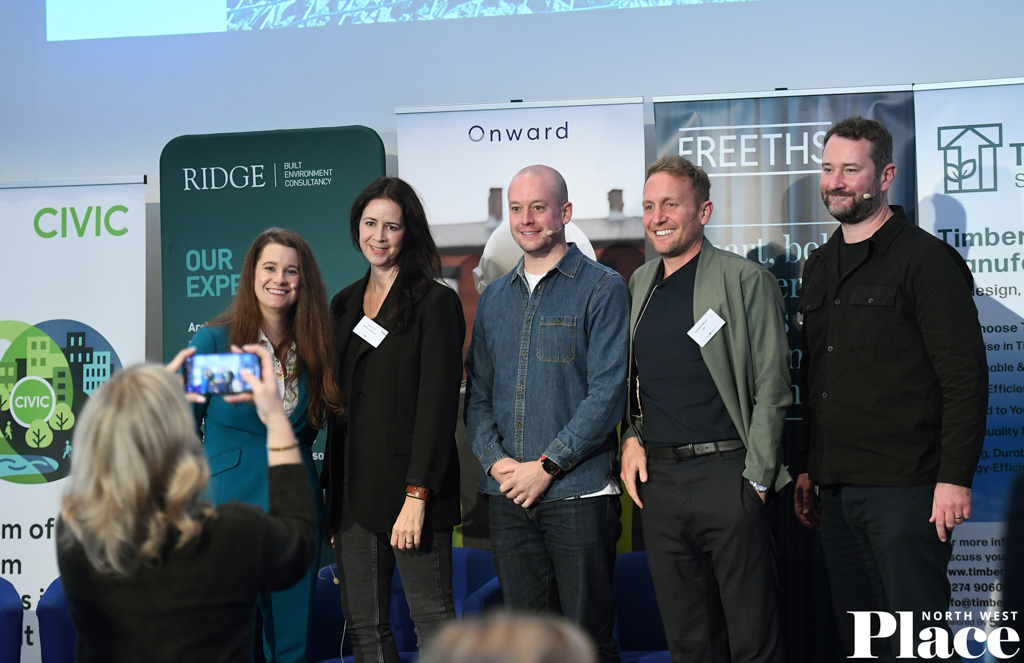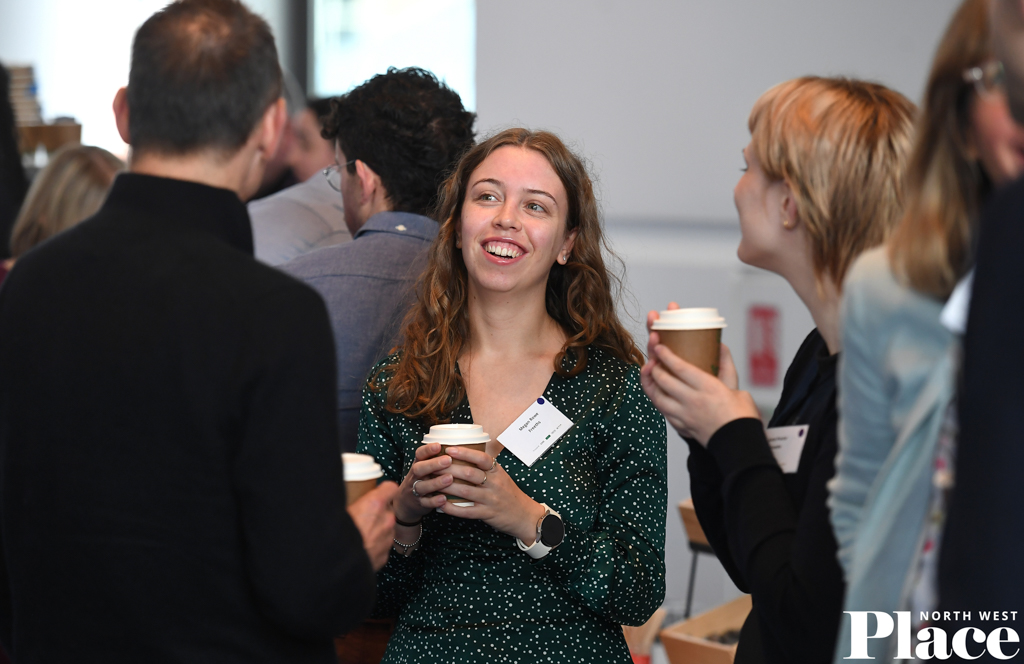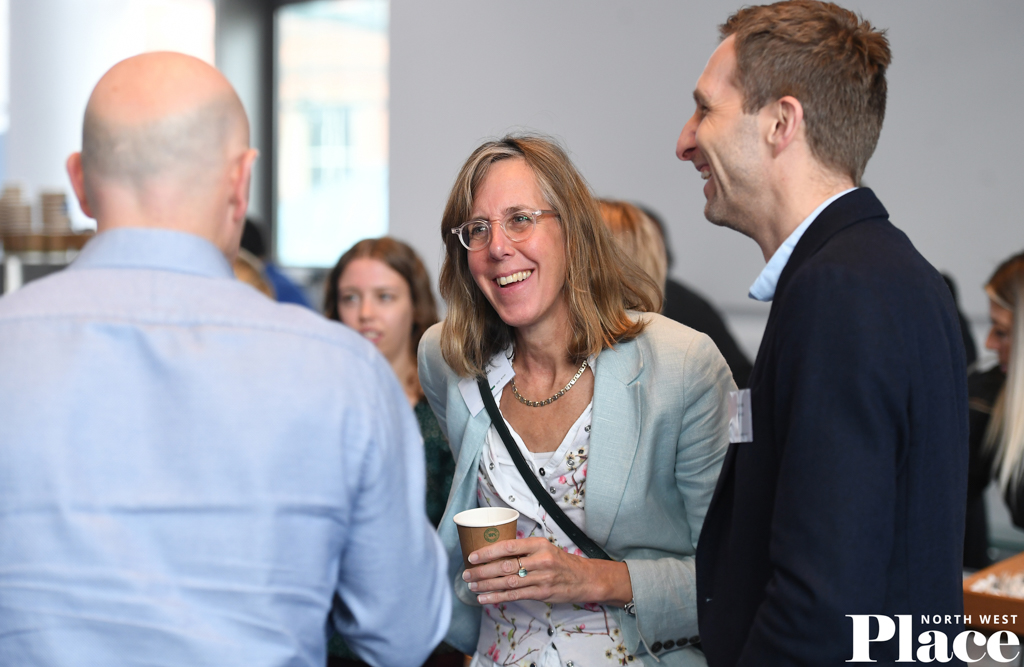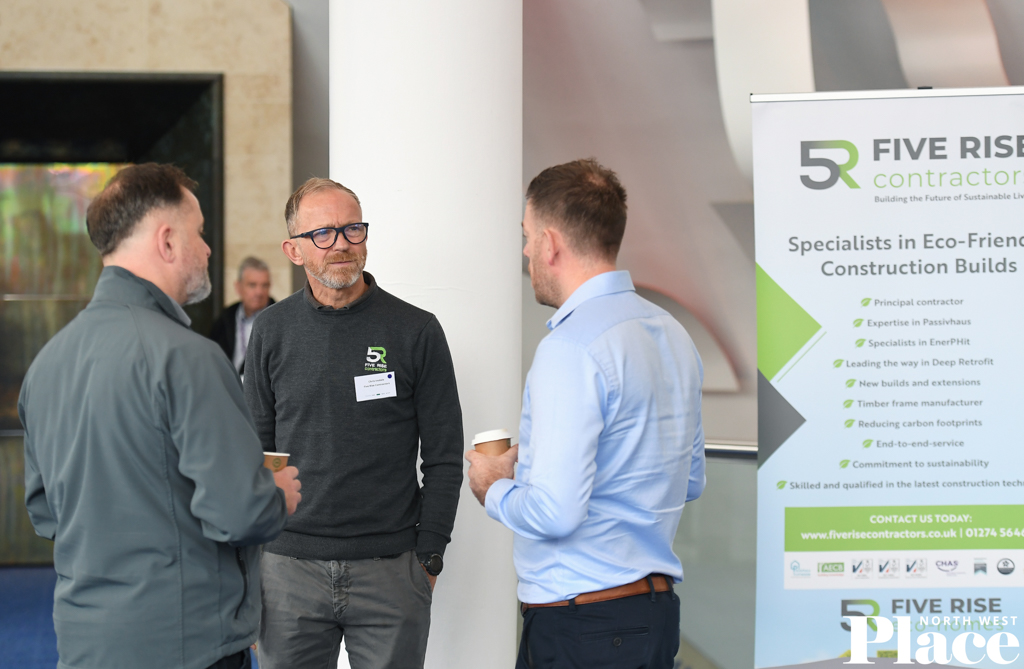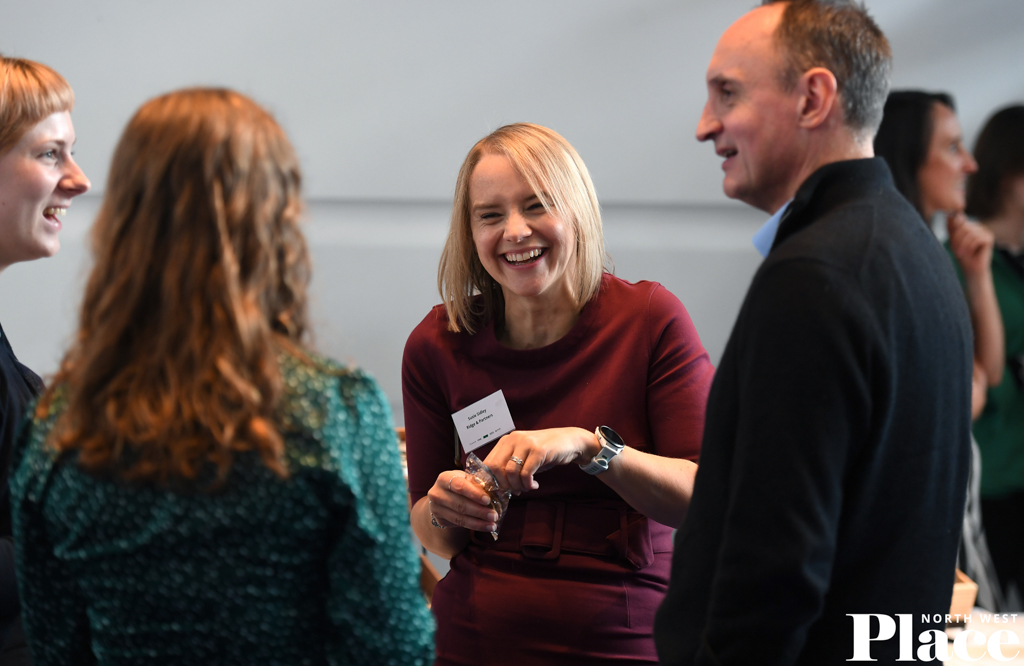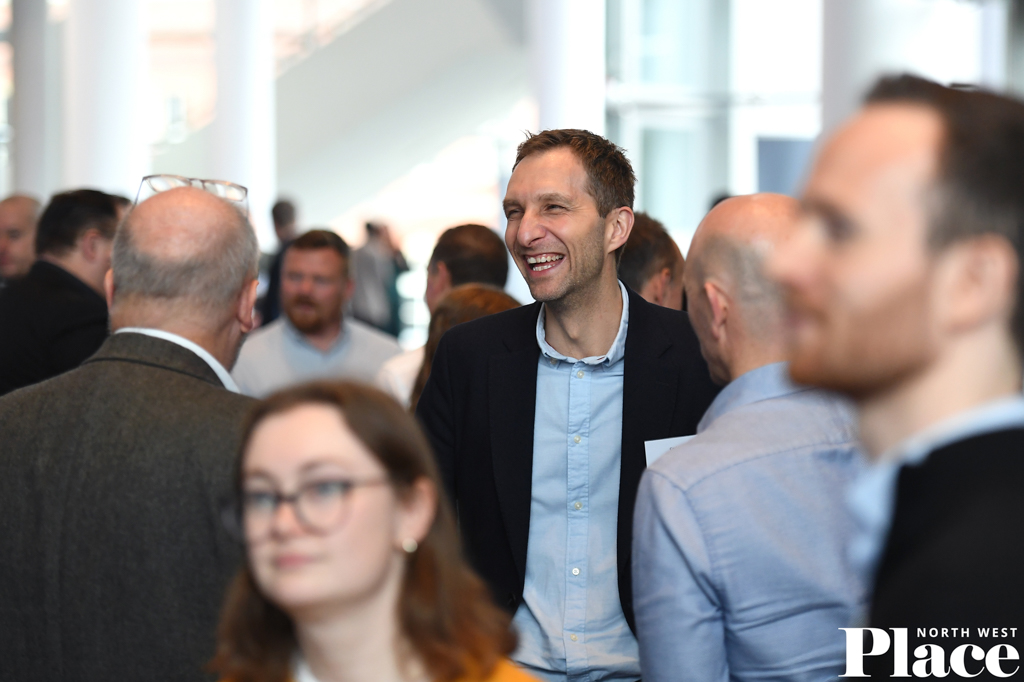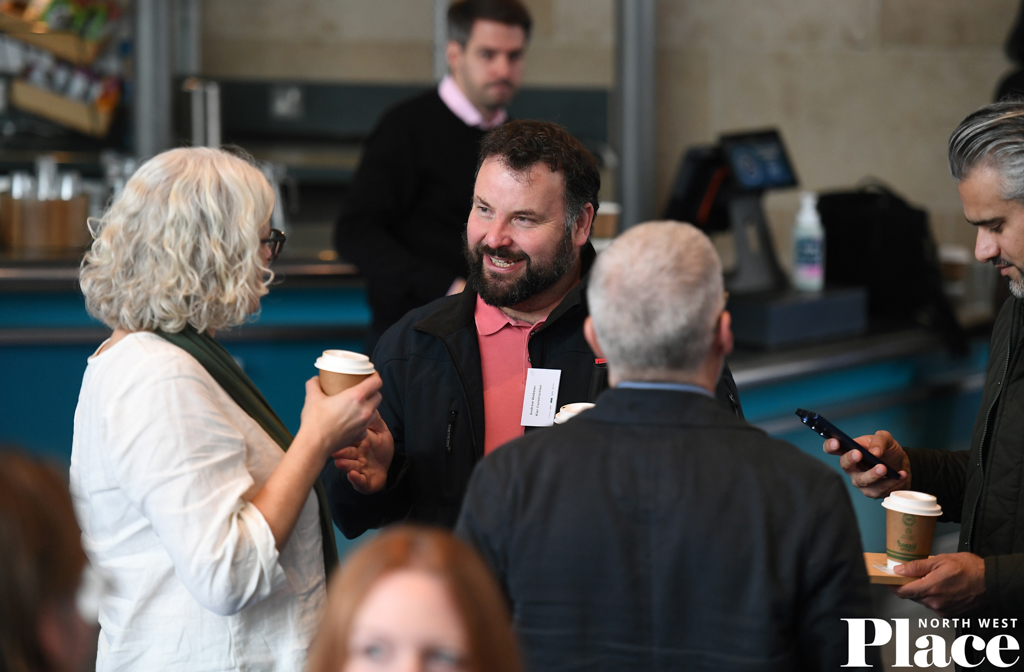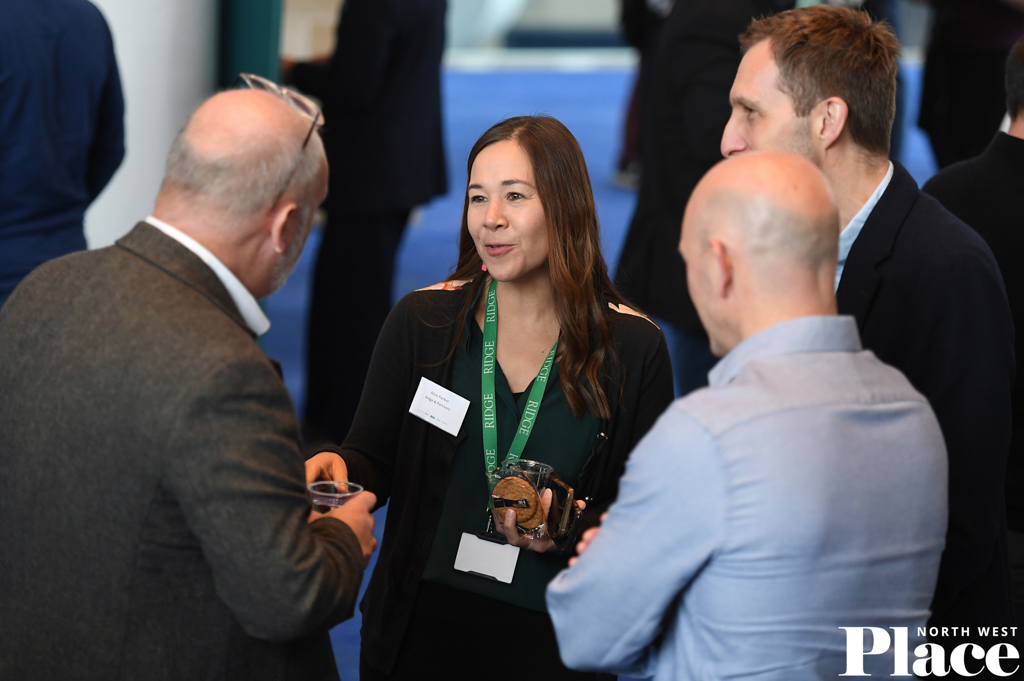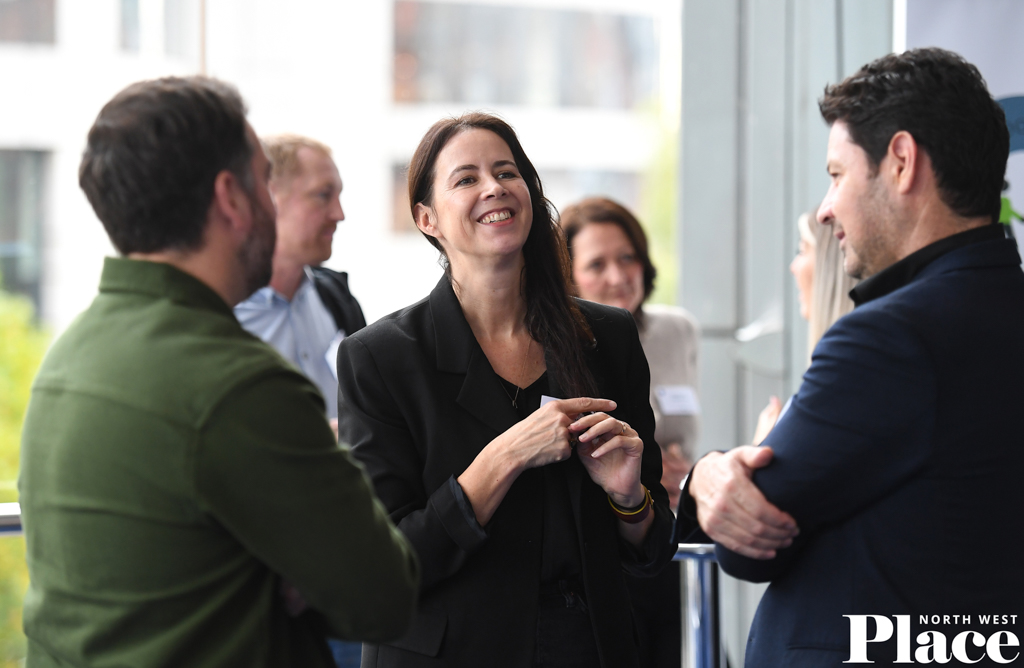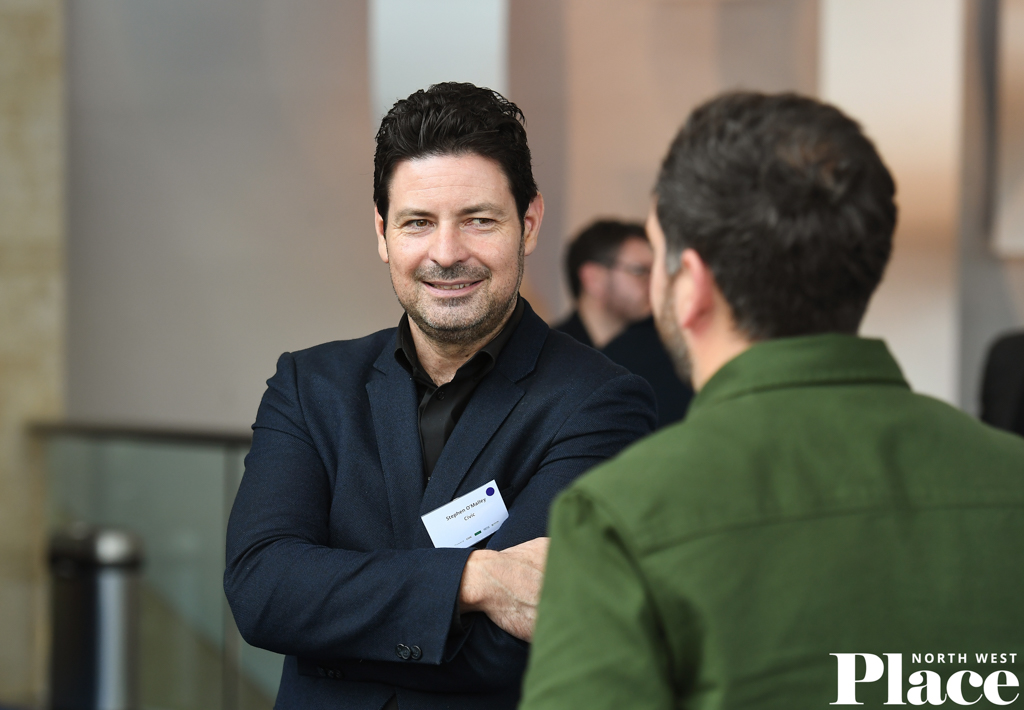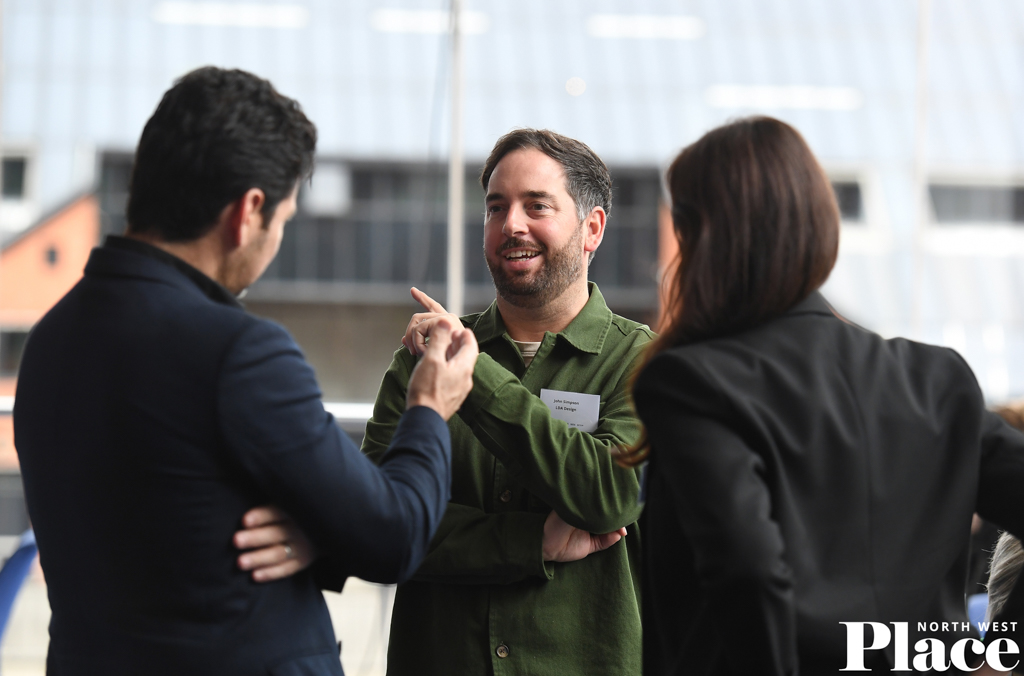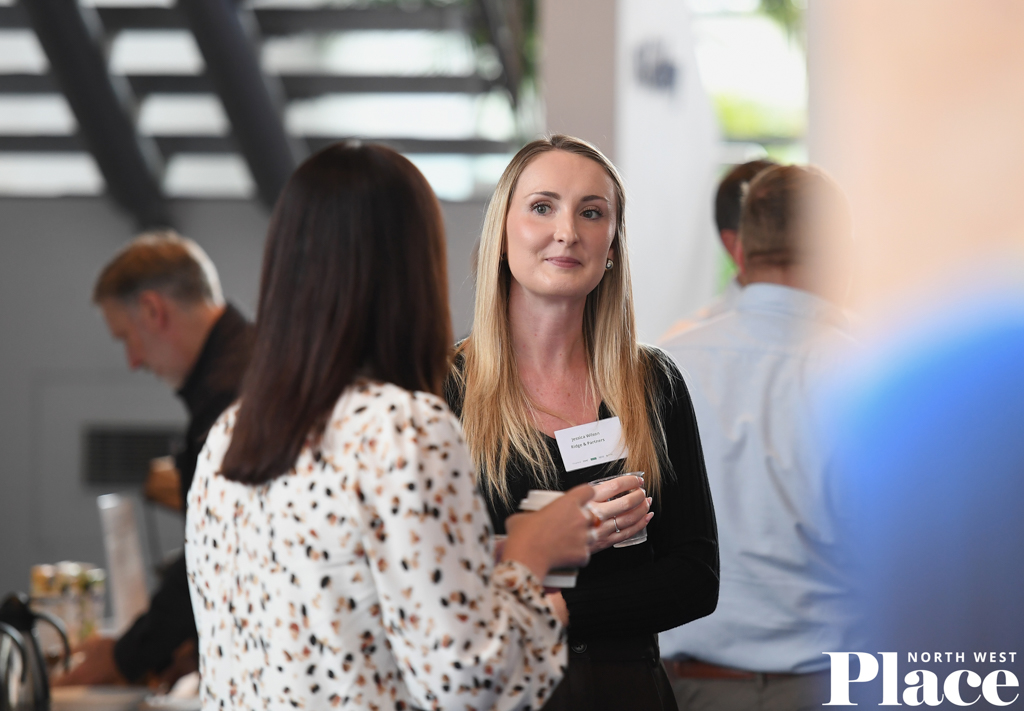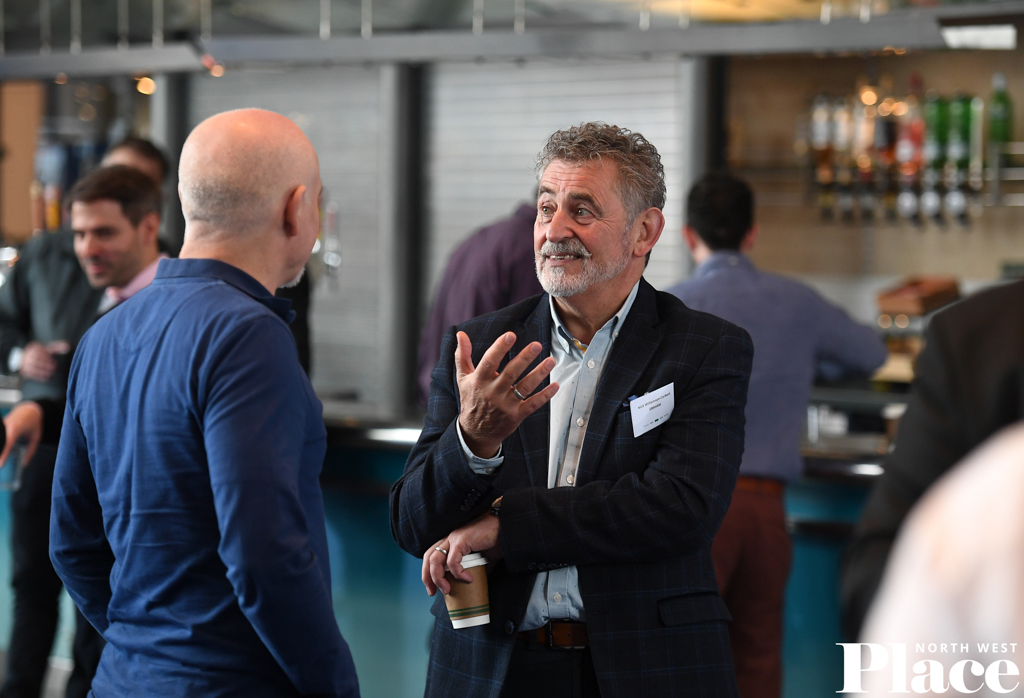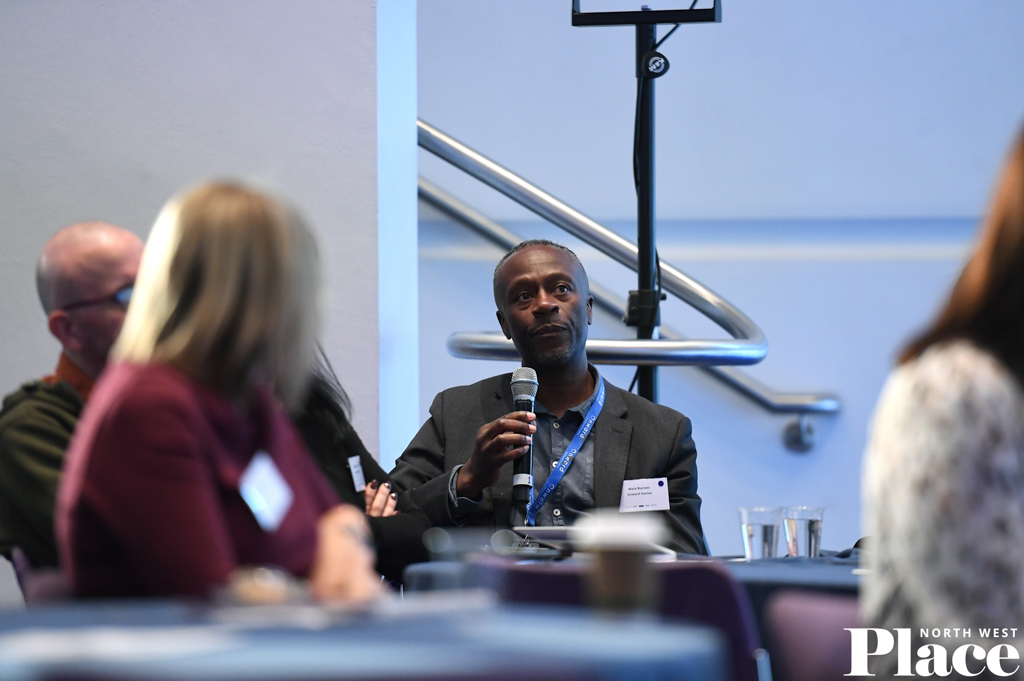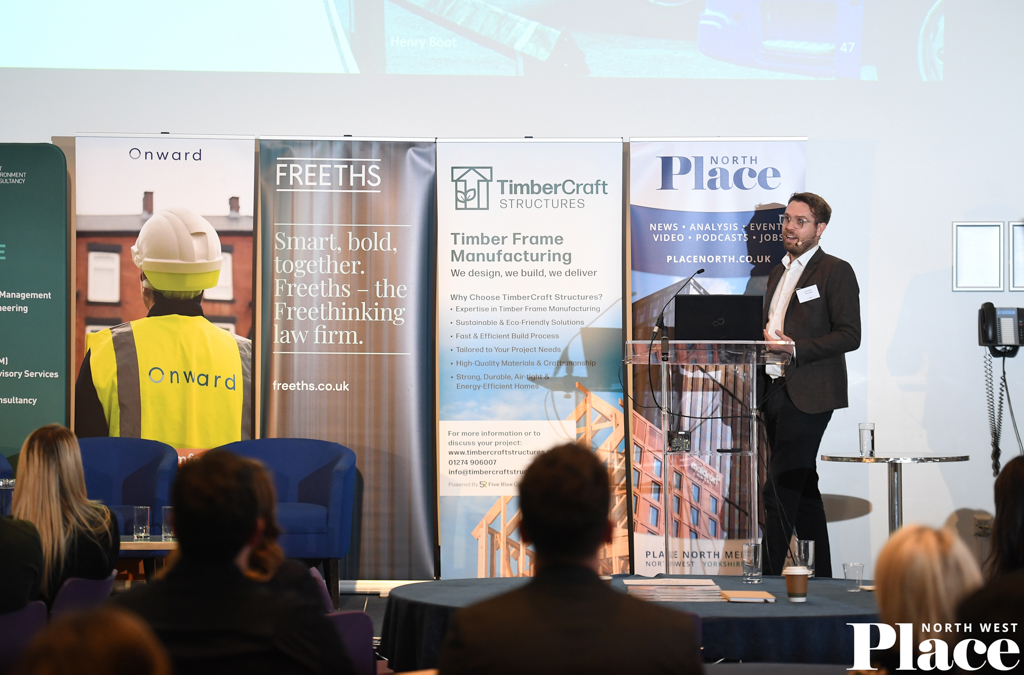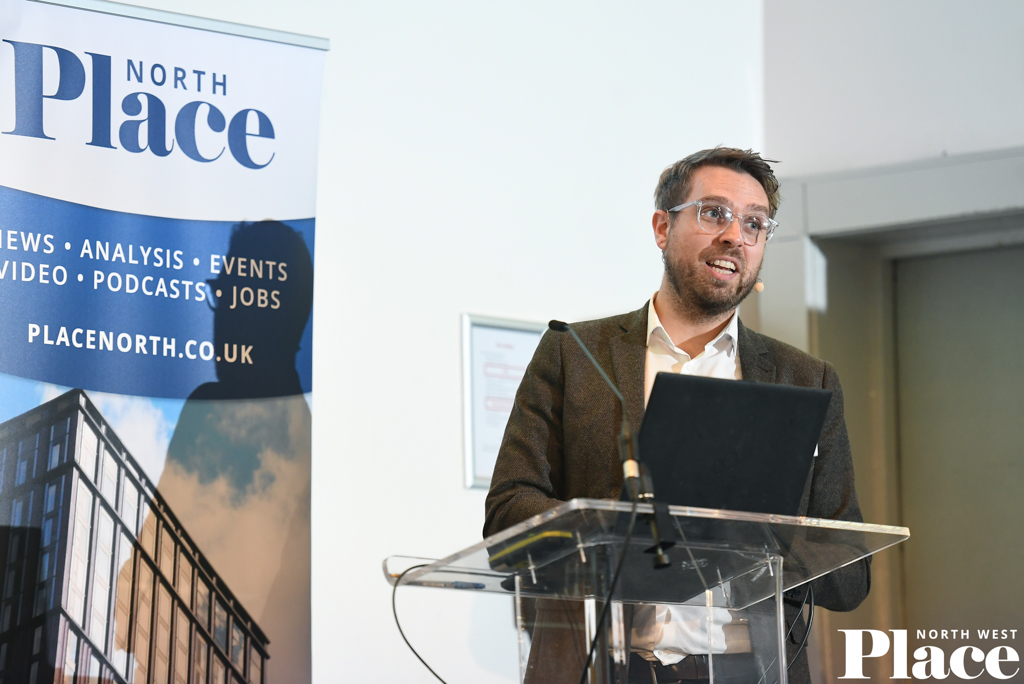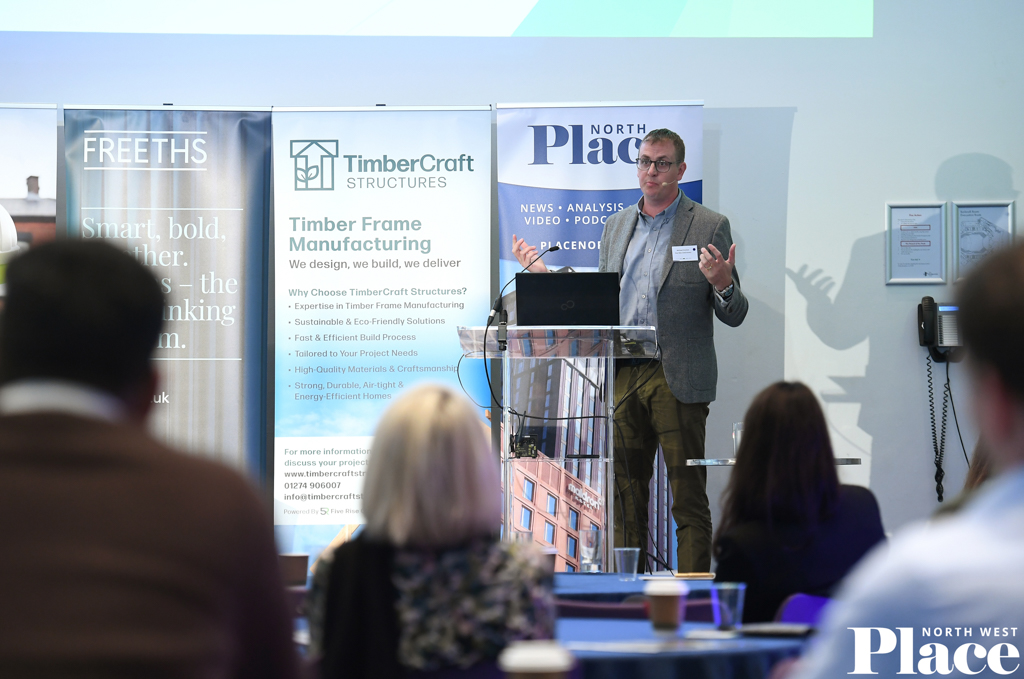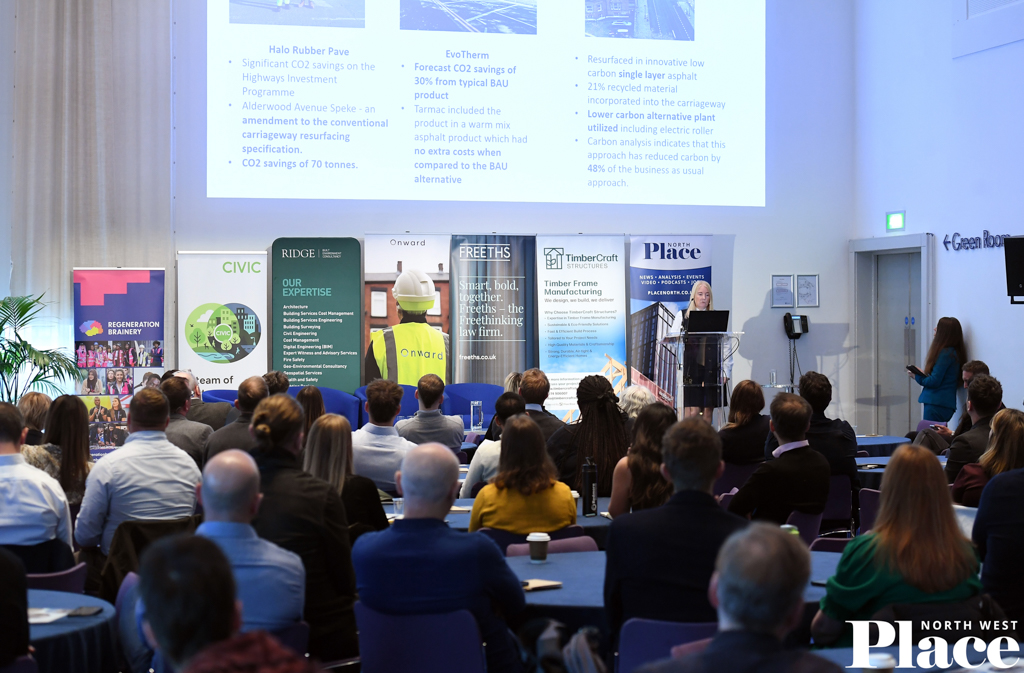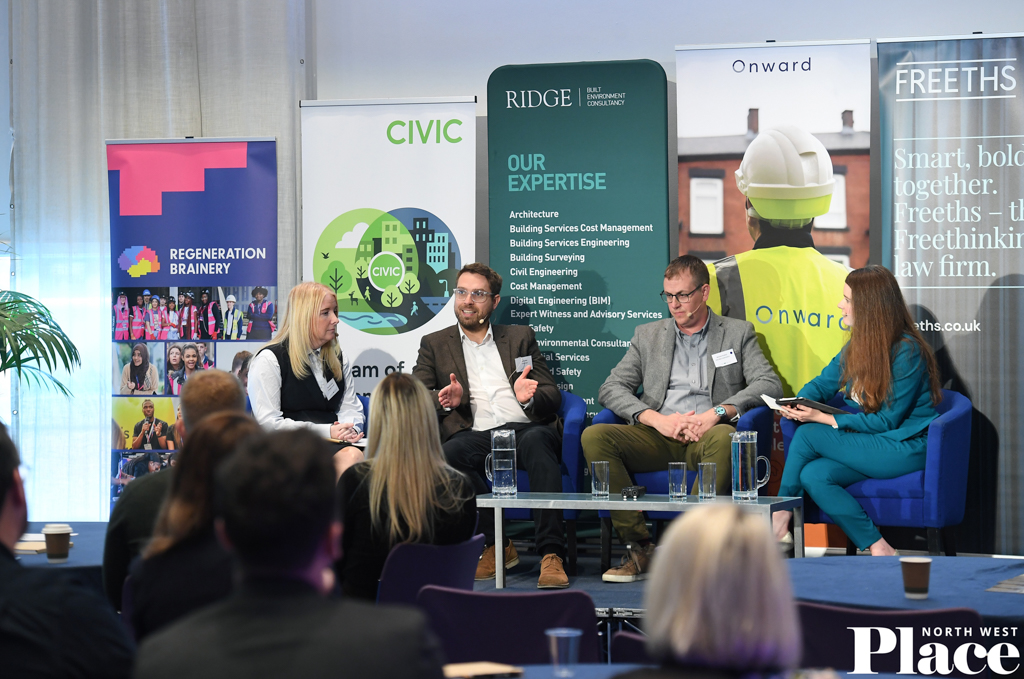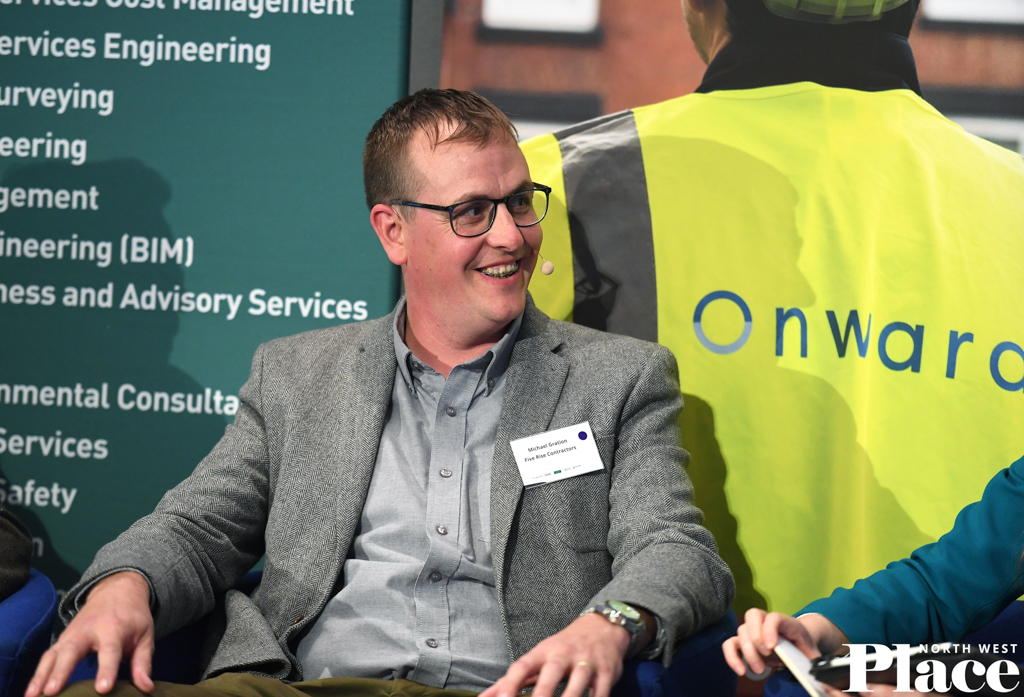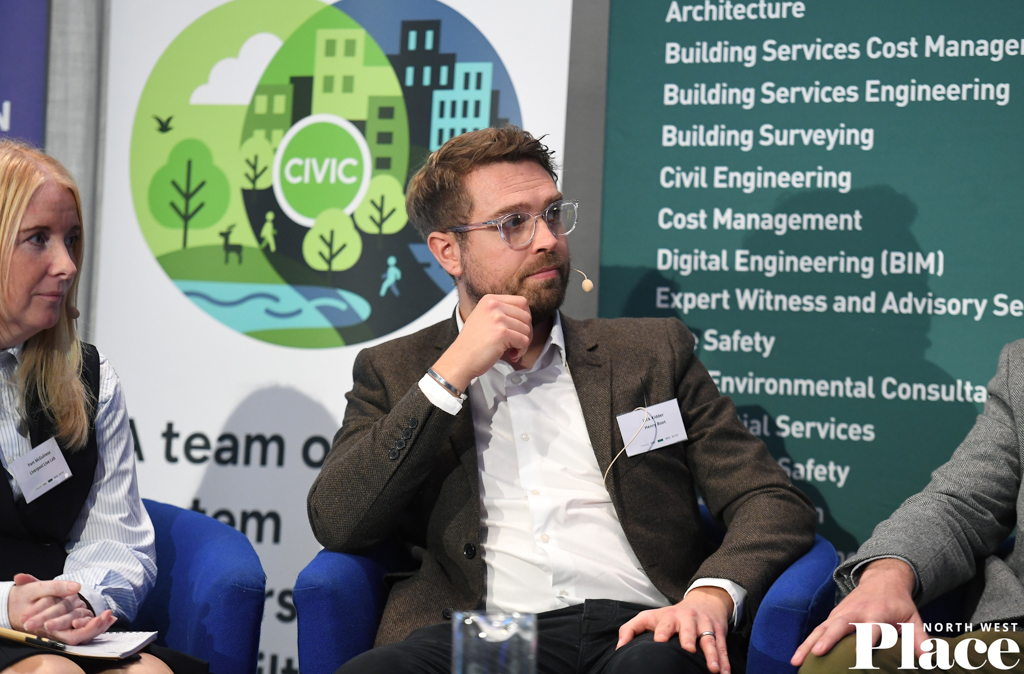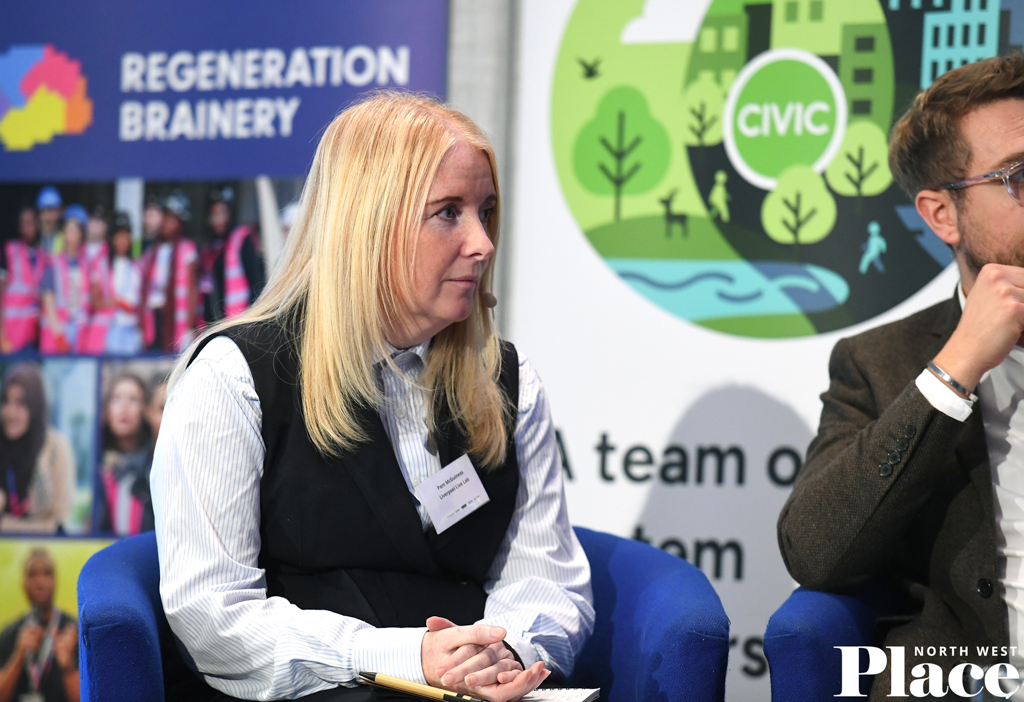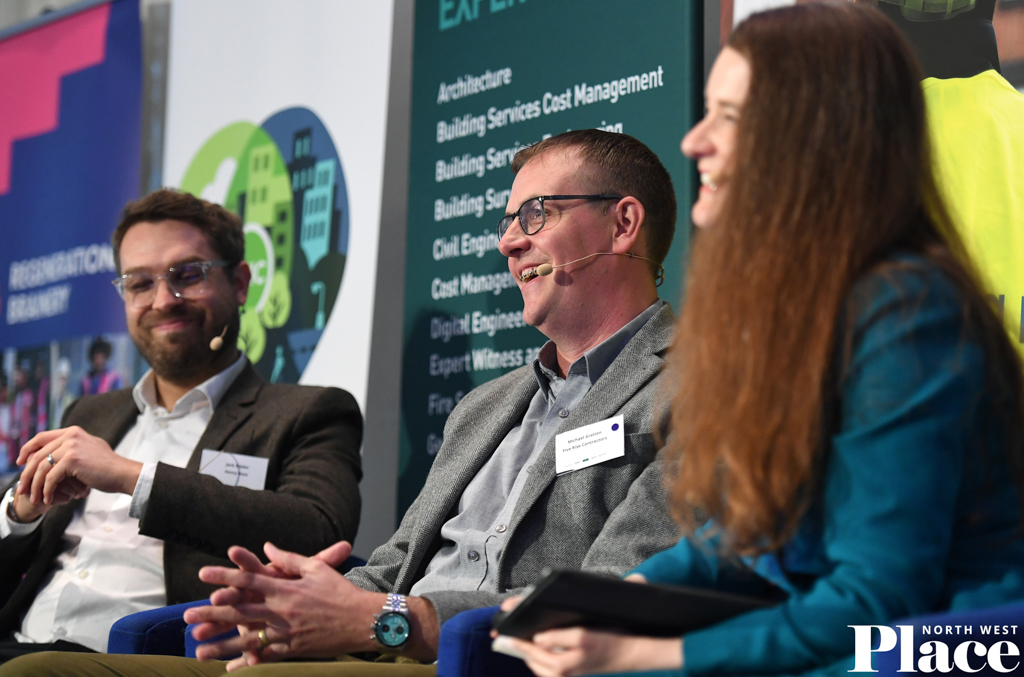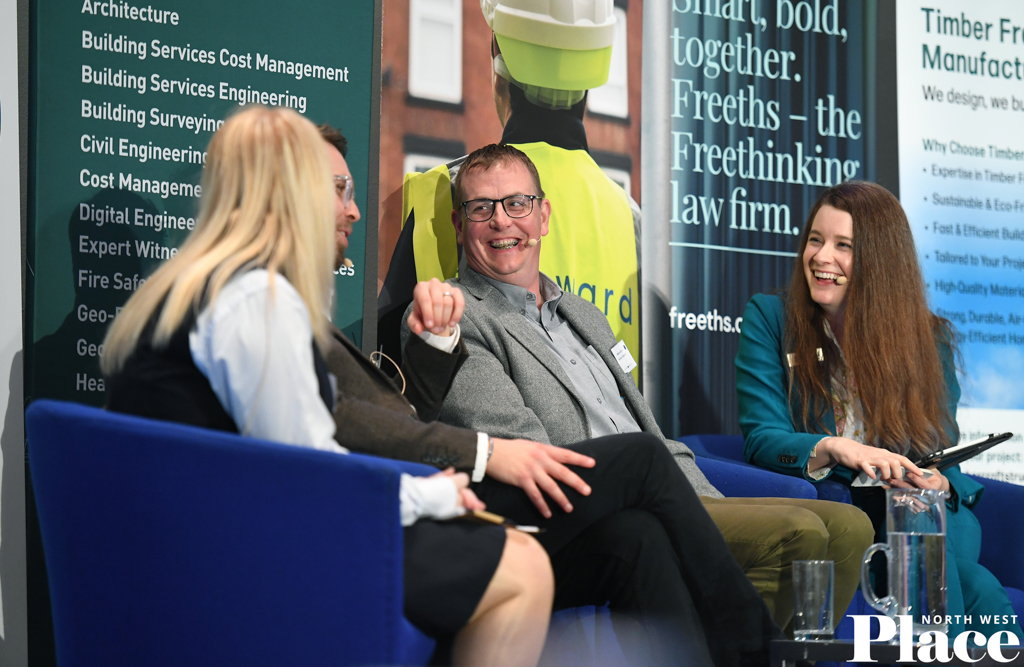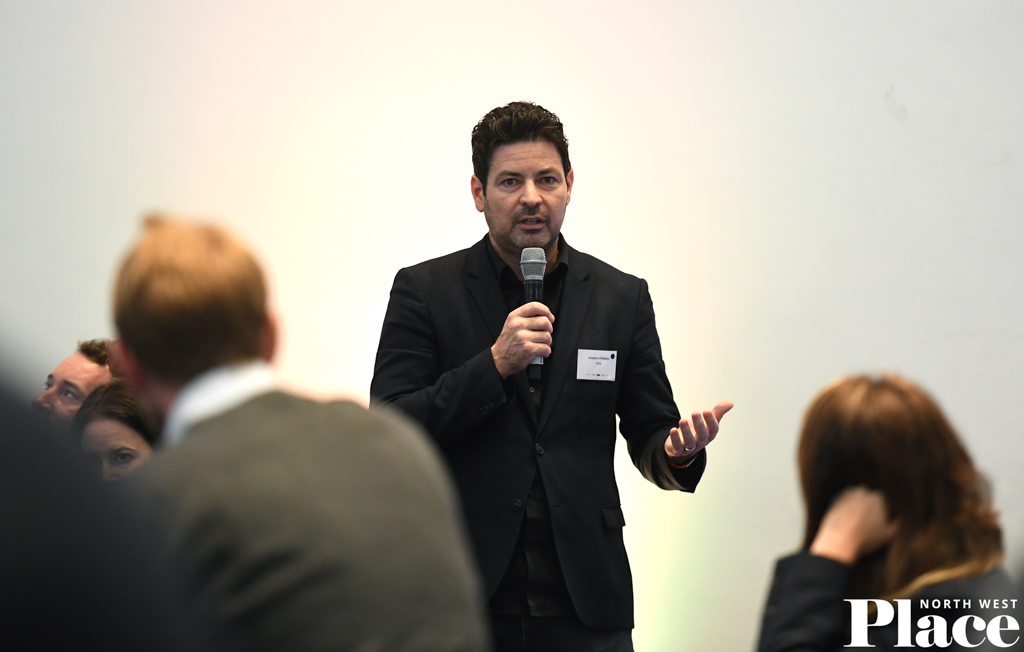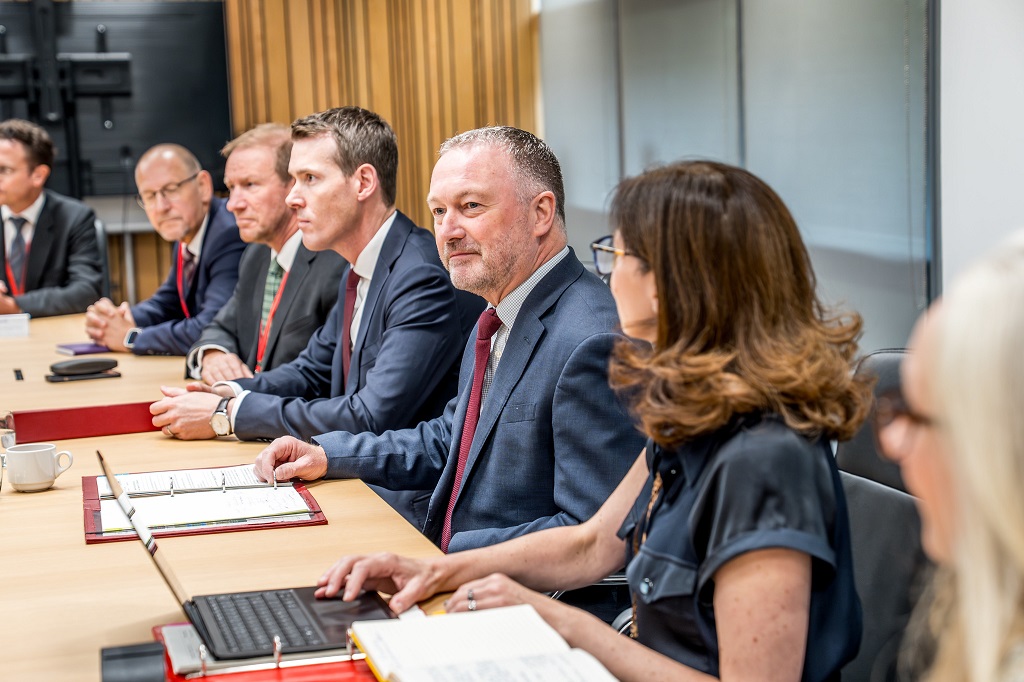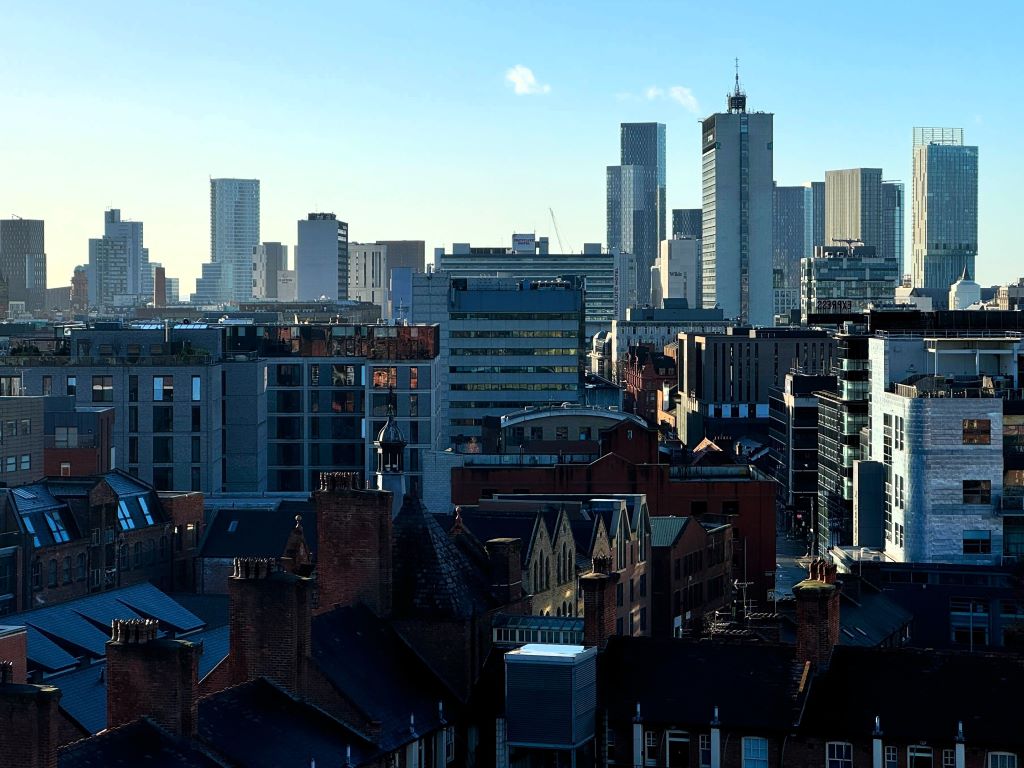Event Summary
Sustainability in Practice | Summary + photos
Property professionals from various sectors gathered together to explore best practice when it comes to low-carbon, energy-efficient developments.
Place North’s Sustainability in Practice was an interactive event, where participants were encouraged to contribute their own suggestions for how the industry can best move forward in addressing the climate crisis.
They heard from the project team behind the Climate Innovation District in Leeds for an in-depth case study, as well as from representatives from Henry Boot, Five Rise Contractors, and Liverpool Live Labs.
Those attending were encouraged to explore the world of low-carbon construction materials as well, with a display showcasing KeynoteQ’s K-BRIQ, which is made of mostly recycled material, and HG Matthews’ STROCKS, which are unfired earth blocks of straw and clay.
Sustainability in Practice was sponsored by Onward Homes, Civic, Ridge & Partners, Freeths, and Five Rise Contractors. It was chaired by Place North West editor Julia Hatmaker.
Expert Speakers
Michael Gration, managing director, Five Rise Contractors
Jack Kidder, responsible business manager, Henry Boot
Pam McGuiness, innovation programme lead, Liverpool Live Lab
Paul Morris, director, Civic
Linda Thiel, partner, White Arkitekter
Matthew Warner, director of landscape, Layer.studio
Jonathan Wilson, managing director, Citu
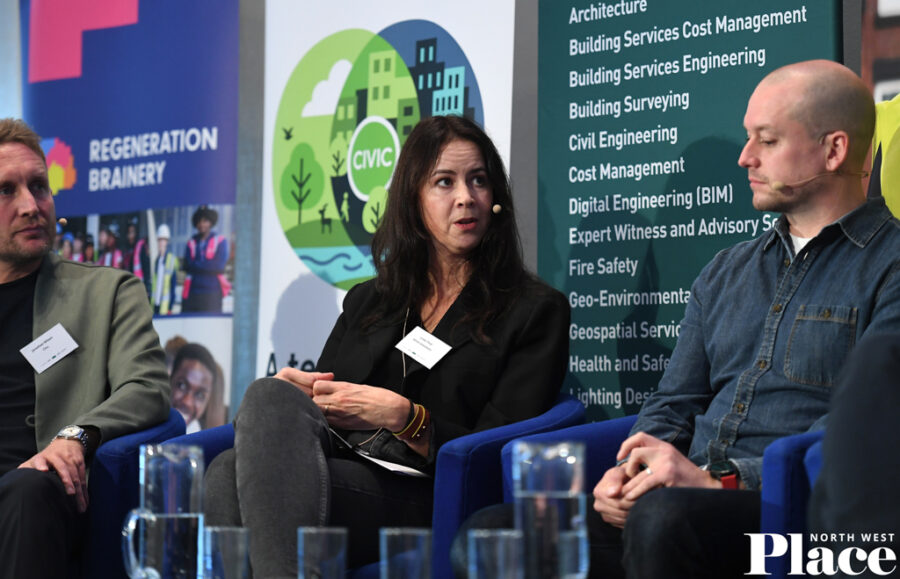
White Arkitekter’s Linda Thiel is the architect behind the Climate Innovation District in Leeds. Credit: Place North
Climate Innovation District
- Developed and delivered by Citu, the Climate Innovation District is proof of the possible when it comes to sustainable development. It comprises of hundreds of low-energy homes, a brewery, a considerable amount of green space, and Citu’s own timber MMC factory. There are also plans for a school and care home to be built. All of this is on brownfield land
- Perhaps the most ‘scandalous’ element of the CID is the fact that cars are parked underneath the site, with each resident only offered one parking spot that they will also have to pay for them. This allowed for more biodiversity initiatives and for nature to play a prominent role in the project
- Add to that the removal of front garden fences, which encourages residents to meet their neighbour and to treat the area like a shared garden
- Nature does a considerable amount of heavy lifting in the project, with most of the landscape permeable and planted so that it can be a big sponge to manage surface water. Any water that lands on hard surfaces is channelled via water butts so the water can be reused or to a series or rain gardens or into a mattress that sits beneath the landscape so it is discharged at a low rate to the nearby river – avoiding big pipes and tents, reducing the amount of carbon and saving costs
‘If you remove the cars and deprioritise our obsession with cars when look at place then you open up a wealth of opportunities,’ Jonathan Wilson
A culture of change
- Collaboration is absolutely essential when it comes to making a project as sustainable as possible. Sometimes your sustainability champions will come from unlikely sources – at Henry Boot, for example, the finance team has been the MVP by spotting trends and areas where the company can eliminate waste
- Do not be afraid to fail – White Arkitekter’s Linda Thiel spoke about how there were seven prototypes for the houses at the Climate Innovation District before they settled on the version they use today
- Get creative and think outside the box. Liverpool Live Labs’ Pat McGuiness highlighted unique ways of engaging with people – such as using art to showcase how bright a glow-in-the-dark paint was that was used in streets
- Data is your friend – you’ll want to keep track of what works and what doesn’t so you know when to pivot. You also want to share this with your team, who may be able to spot possible solutions
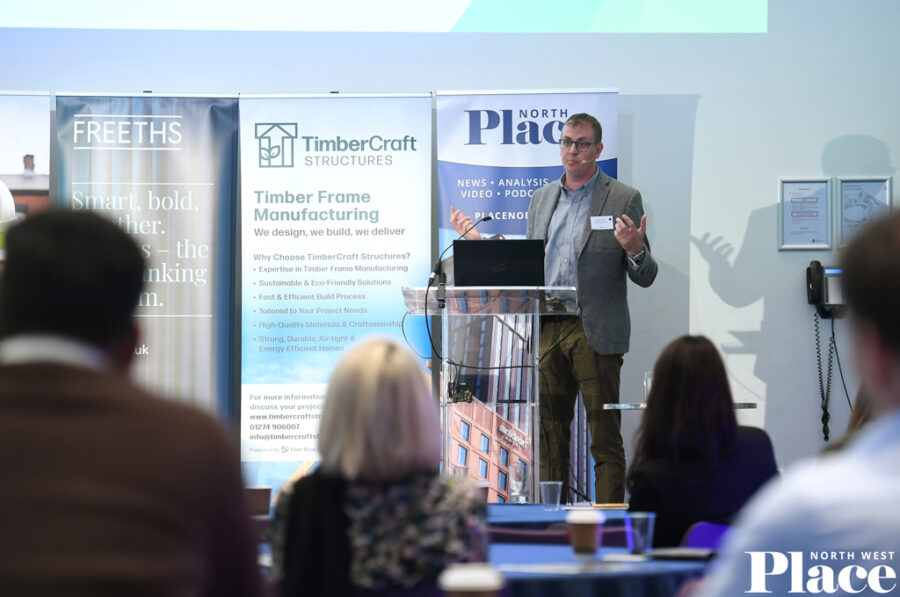
Michael Gration from Five Rise Contractors shared how his company tackled waste in construction. Credit: Place North
Waste reduction
- The construction industry accounts for nearly a third of landfill waste in the country
- Reducing waste can offer clients a financial saving – Five Rise’s Michael Gration spoke about a project where they saved 212 cubic metres of waste, which is the equivalent of 27 skips. In terms of pounds, he said that equated to £8,100. He added they did this by reusing insulation and recycling aluminium cladding
- Citu’s Jonathan Wilson spoke about how the construction industry’s waste problem encouraged him to pursue MMC – and to create Citu’s own factory partly for that purpose
- Part of waste reduction is future-proofing, which Henry Boot’s Jack Kidder emphasised when talking about the company’s Island office building in Manchester. It has been designed with a longer-term view, in particular when it comes to maintaining its sustainability credentials of NABERS 5.5 stars
- Kenoteq’s K-BRIQ as on display for attendees to interact with. This ultra-low-carbon brick is nearly completely made of recycled material
- The Engineers Reuse Collective was introduced to the audience by Civic’s Stephen O’Malley. The collective sees engineers from across the country join together to incorporate the reuse of materials in their projects.
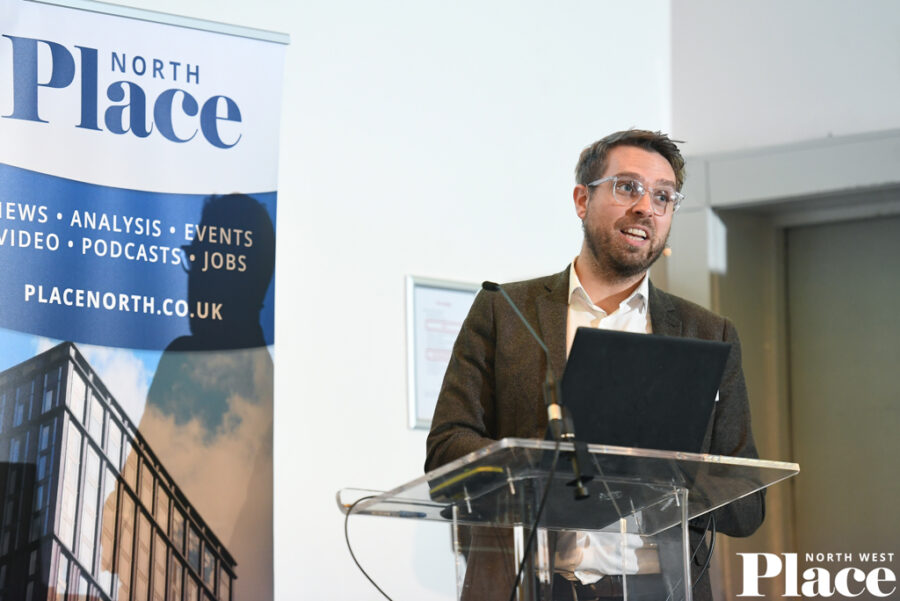
Jack Kidder of Henry Boot shared the lessons his company had learned about sustainability. Credit: Place North
Henry Boot
- Jack Kidder spoke about the company’s shift towards using HVO in its fleets rather than electricity – which reduces the carbon emissions and suits the business’s needs
- Henry Boot has been engaging its supply chain, trialling different ideas, and embracing technology to find the best ways to be low carbon
- It is crucial to get everyone on board with your sustainability journey and ensure they know they are doing it
Five Rise Contractors
- Michael Gration spoke about his company’s work on Passivhaus and how it is exploring how to build Passivhaus homes at scale for social housing through its timber-frame focussed MMC company TimberCraft Structures
- He spoke about the challenges of retrofit projects and why they are important
- Gration also discussed the need for green skills and bringing in people from outside the industry who do not have hang-ups about doing things the same way they have always been done
Liverpool Live Labs
- Pam McGuiness talked about the various experiments going on in Liverpool to explore ways to make its roadways and cycleways more eco-friendly
- This includes using a variety of different materials, such as Luminokrom paint to light up cycle paths, or using permeable surface material Kiacrete on roads
- Collaboration is the key to this project, which utilises the brainpower of academics, engineers, scientists, local authorities, and solicitors to make it work
Tips for sustainable projects
From the speakers
- Civic’s Paul Morris advocated for investing time in the design phase of a project
- Layer.studio’s Matthew Warner advised visiting the development site more than once and throughout the year to see it in every season so you have an idea of how it works
- White Arkitekter’s Linda Thiel suggested using nature-based materials when suitable
- Citu’s Jonathan Wilson advocated for the removal of cars from the landscape
- Wilson also pushed for those in the built environment to keep their focus on people: how they are going to use the development and how it will impact their lives
- Five Rise’s Michael Gration emphasised the need for the industry to both educate itself and others about sustainability and waste reduction
- Henry Boot’s Jack Kidder reminded the audience to not view sustainability in isolation, mentioning the role it plays in culture but also in health and wellbeing
- Kidder also spoke about the importance of future-proofing and designing projects to be flexible and adaptable
- Liverpool Live Labs’ Pam McGuiness advised the room to take time to listen to communities and engage them in the process
From the audience
- When choosing materials for your building, consider its full life cycle and what will happen to it when it is eventually removed from the building
- Make sustainability a priority from the get-go – start early and think long term
- Sustainability should be the golden thread of a project and part of every aspect of it
- Involve a sustainability expert from the outset. Embed them in the team and involve them in the decision-making process. Give people the space to throw ideas around that will holistically benefit the project
- Instead of thinking ‘what do we need to deliver’, think ‘what future can we help shape with this project, plan, proposal, or innovation’
- Understand that budget is the main driver, so sustainability elements must be realistic and accurate. Sustainability is usually the first corner to be cut when the budget is squeezed
- Ask your local schools to build sustainability into the curriculum
What’s Next?
5 November | North Yorkshire Development Update
11 November | Liverpool City Region Development Update
Gallery
Click any image to launch gallery.



